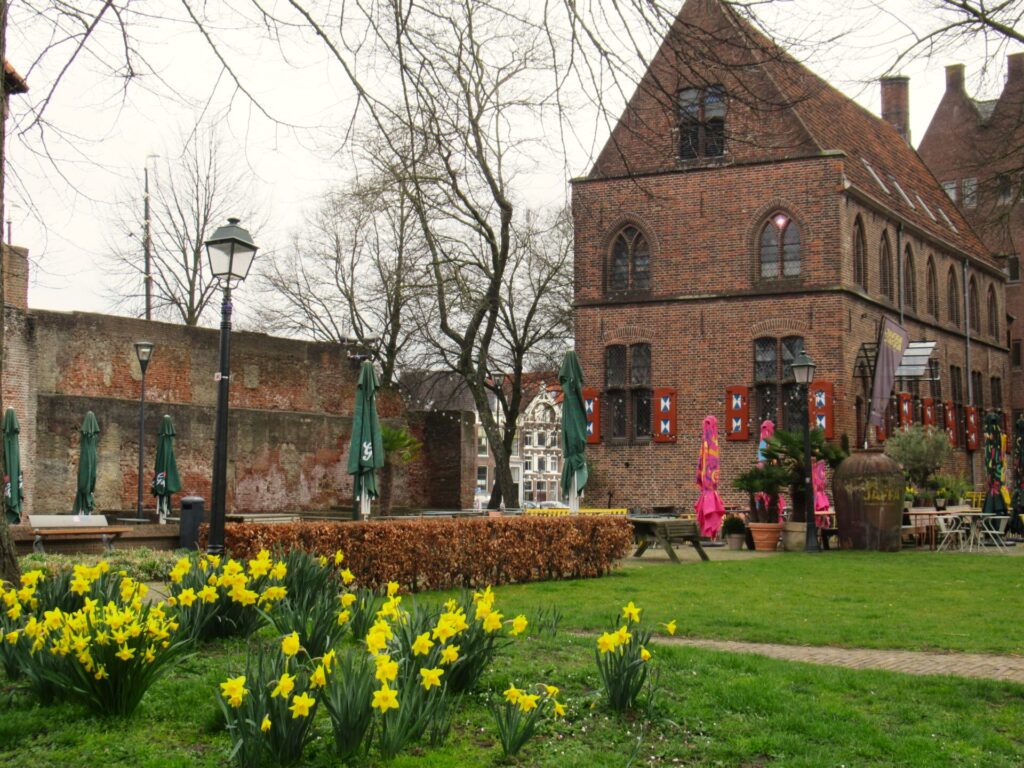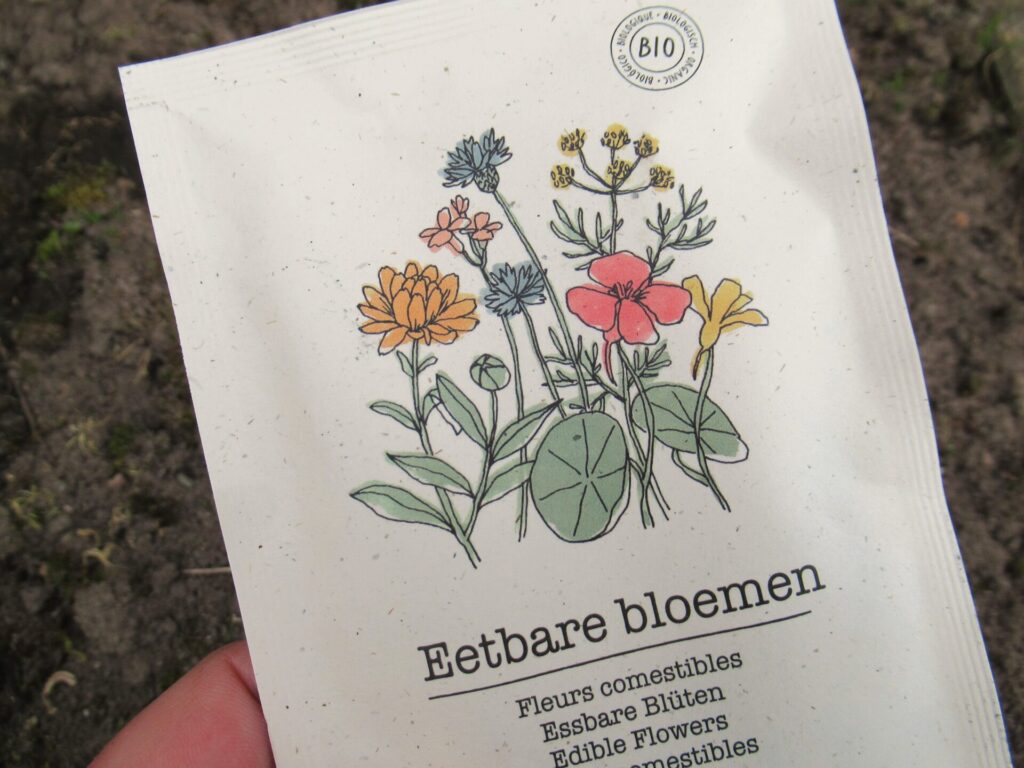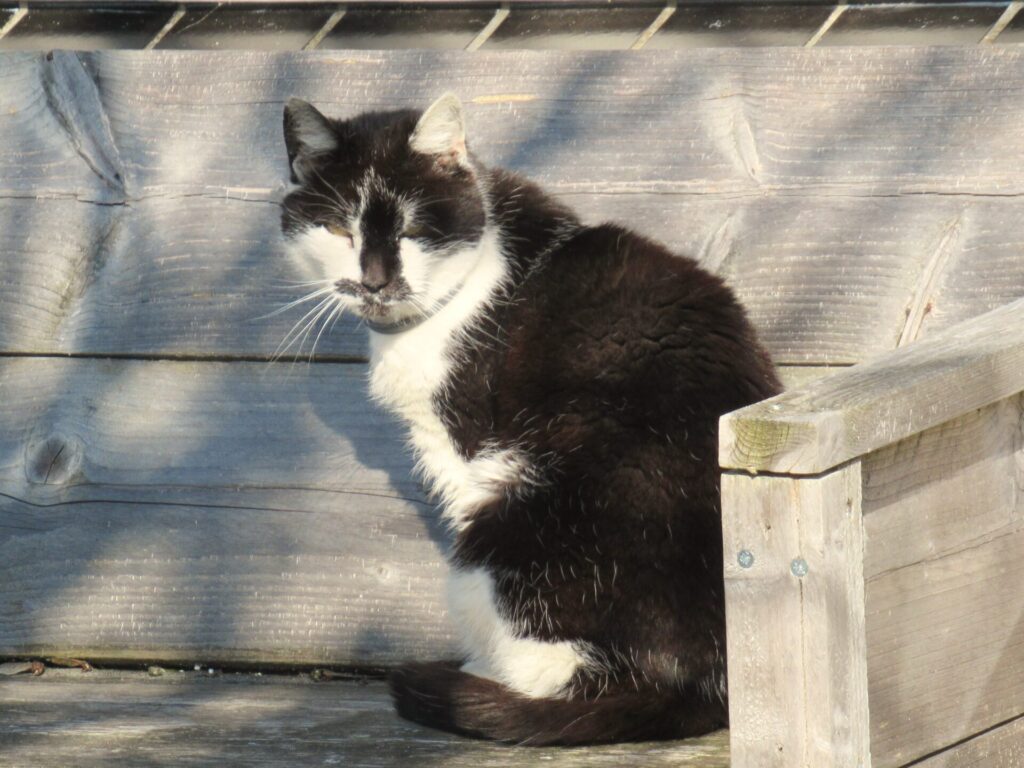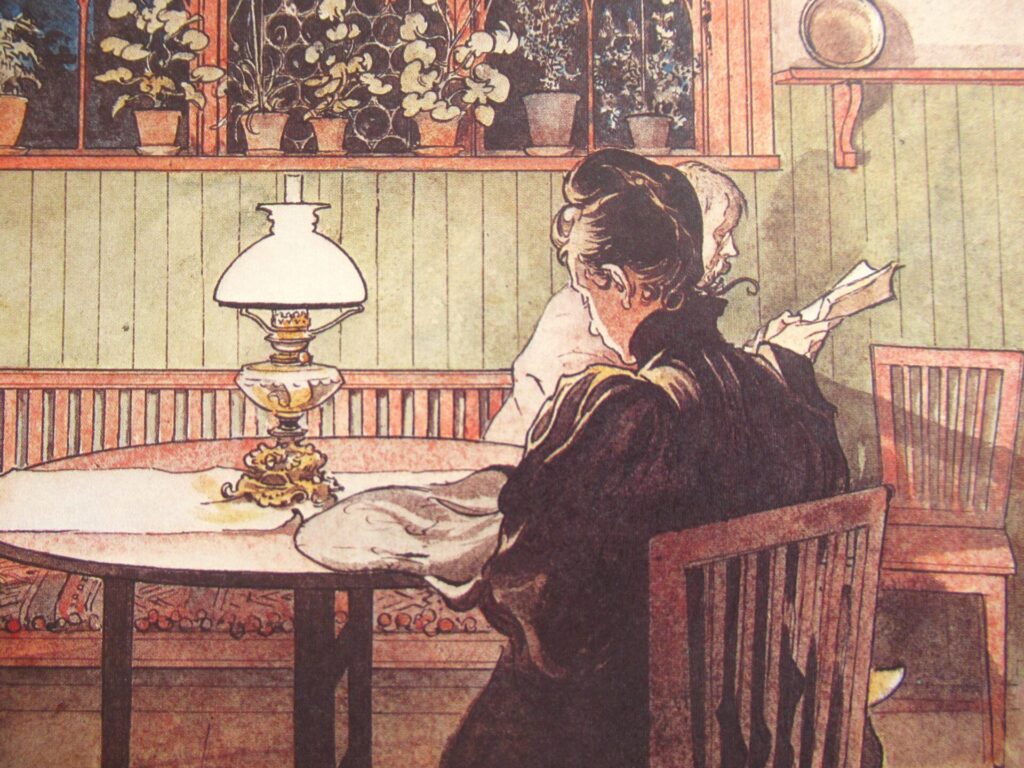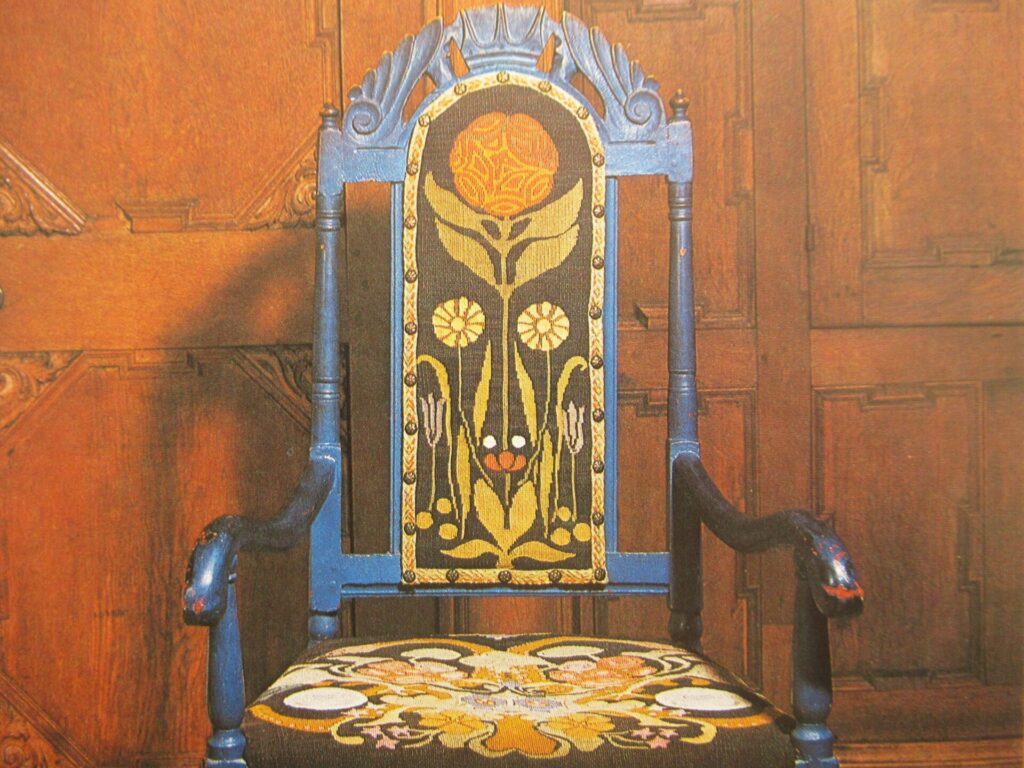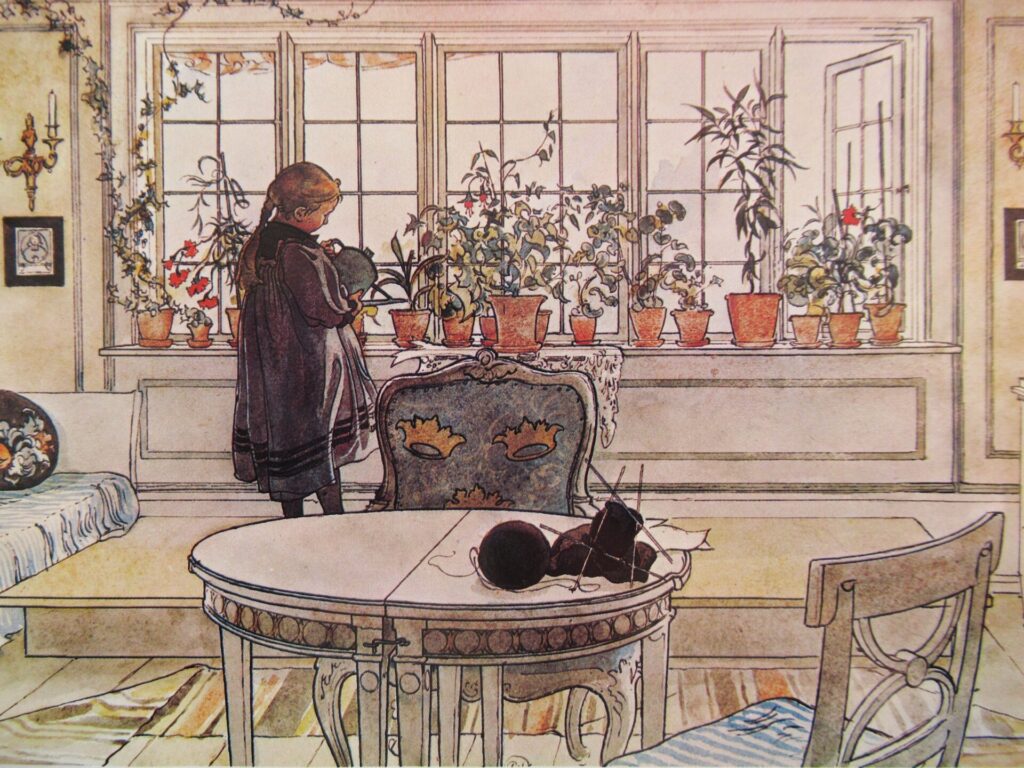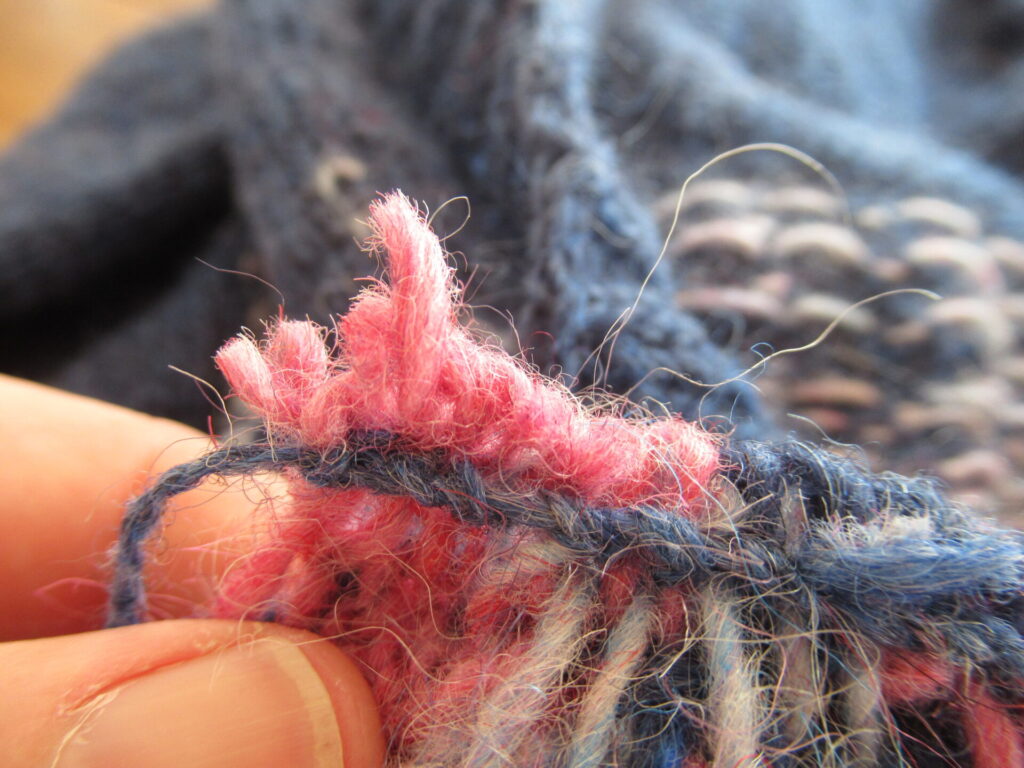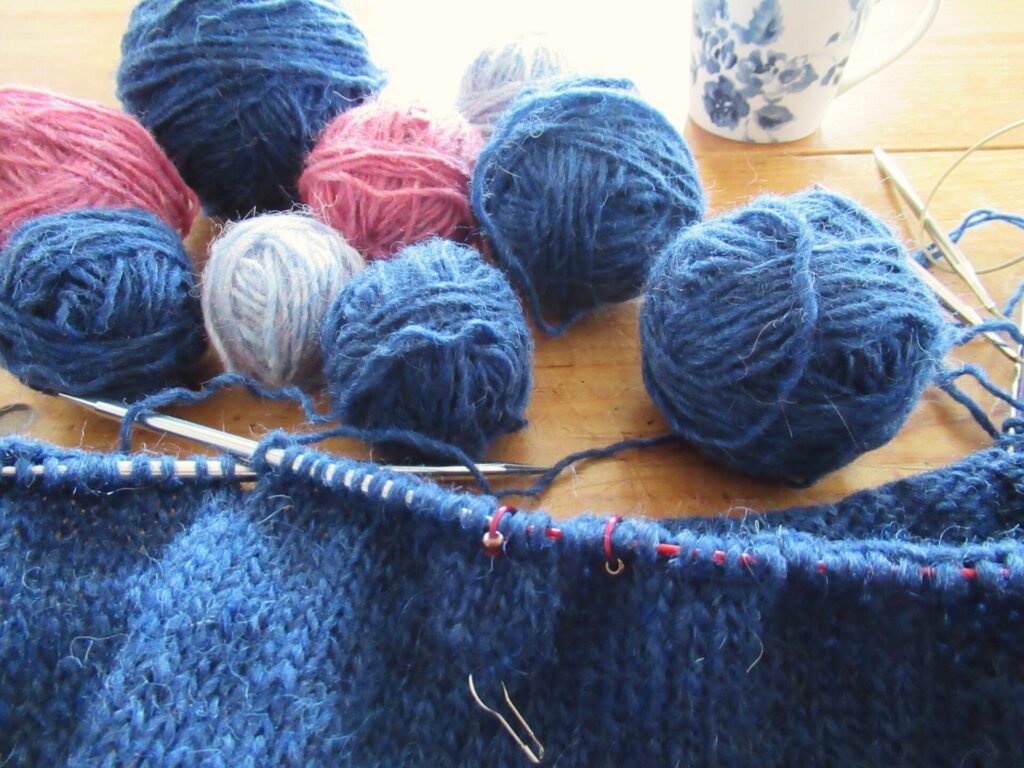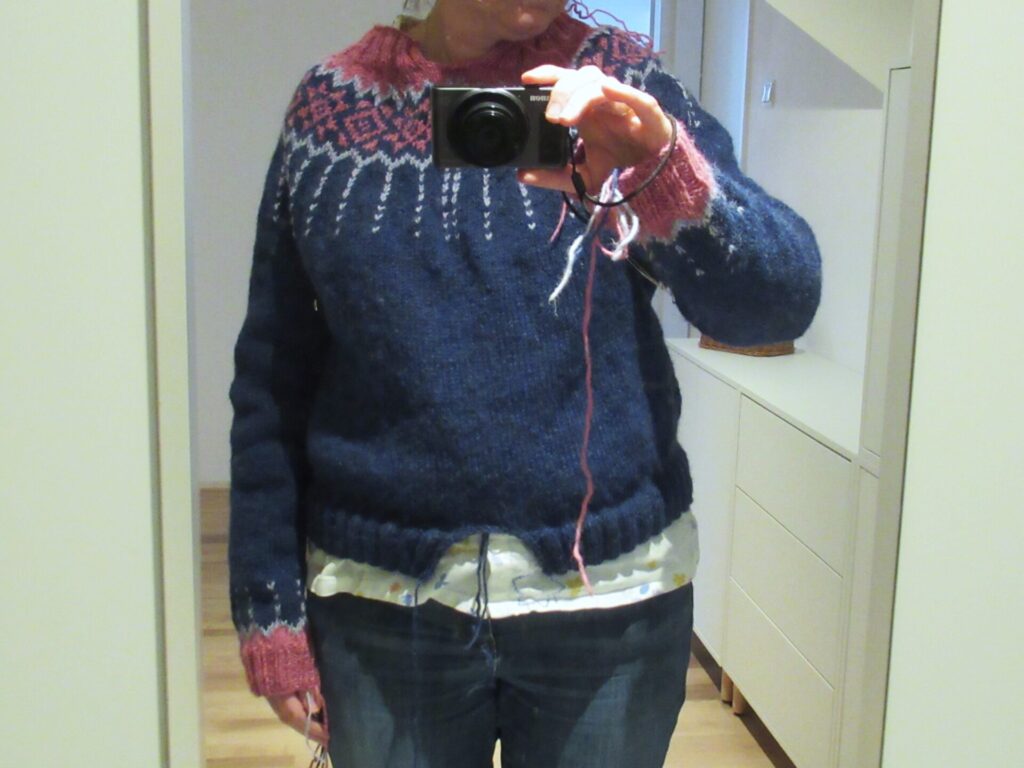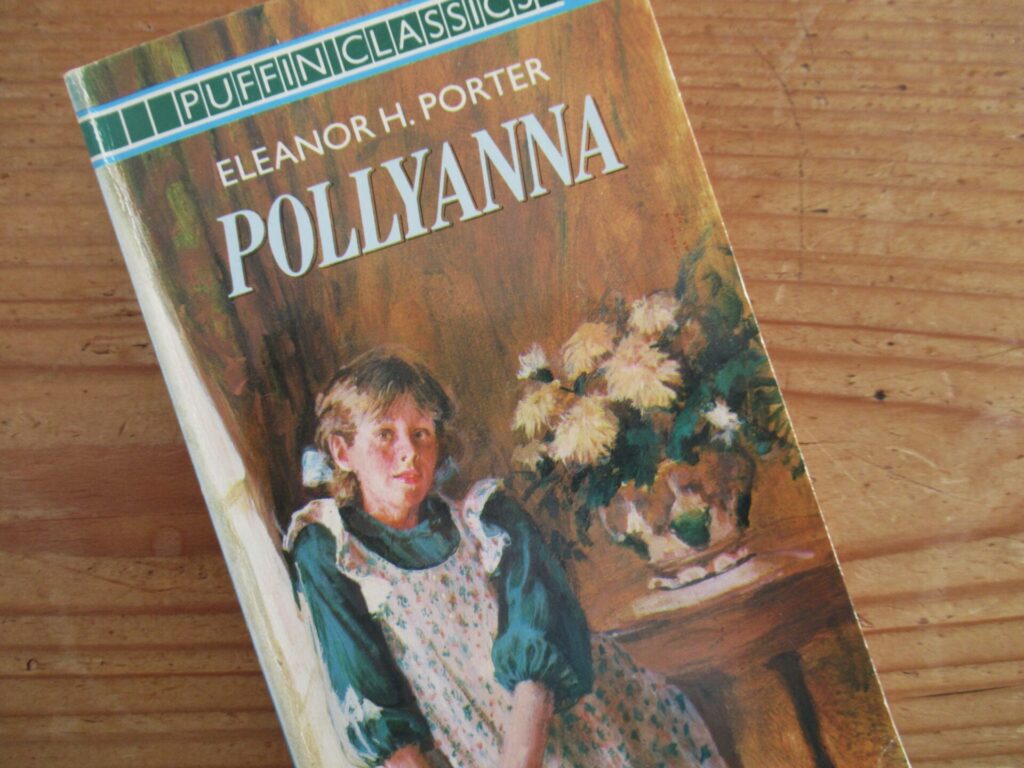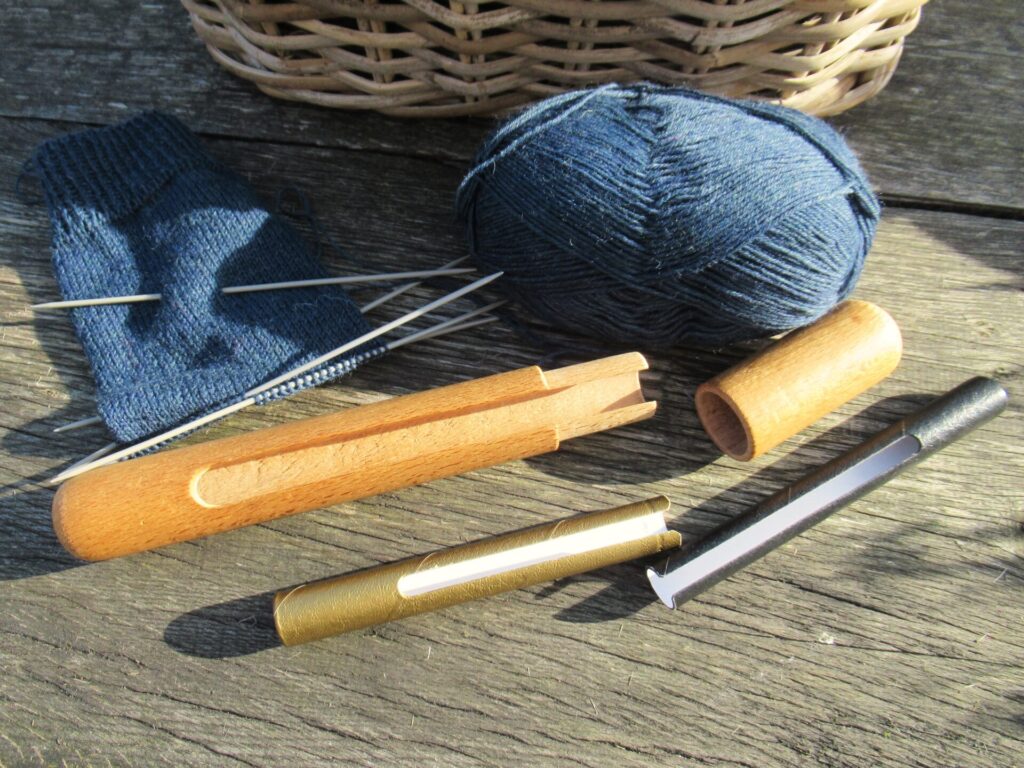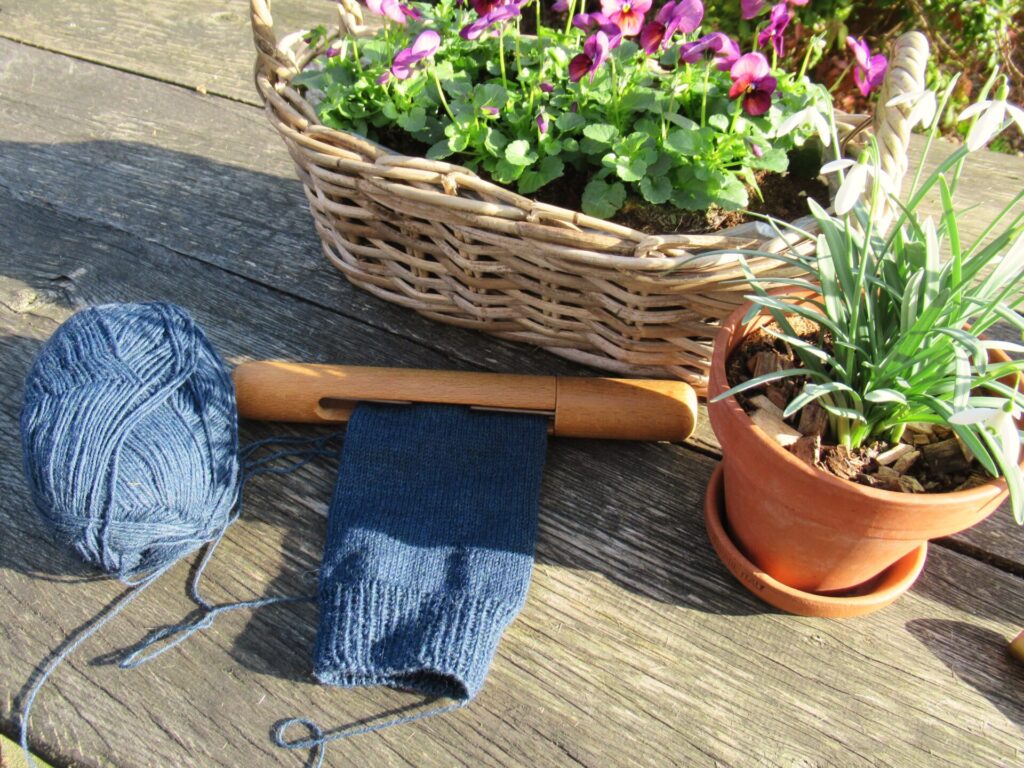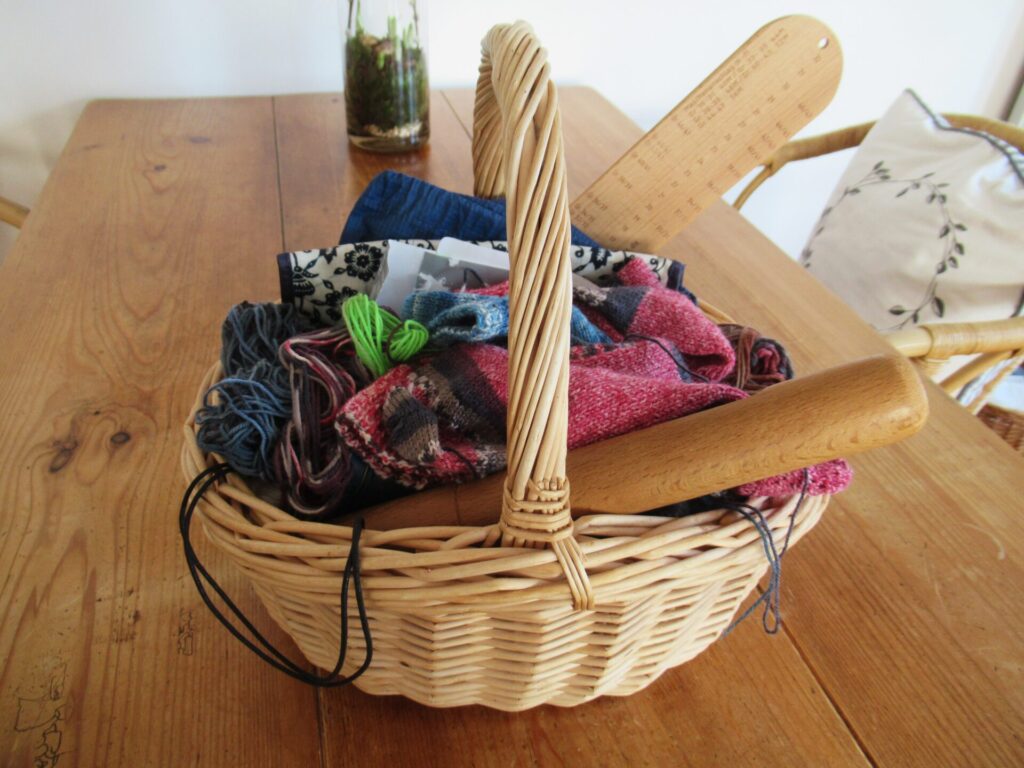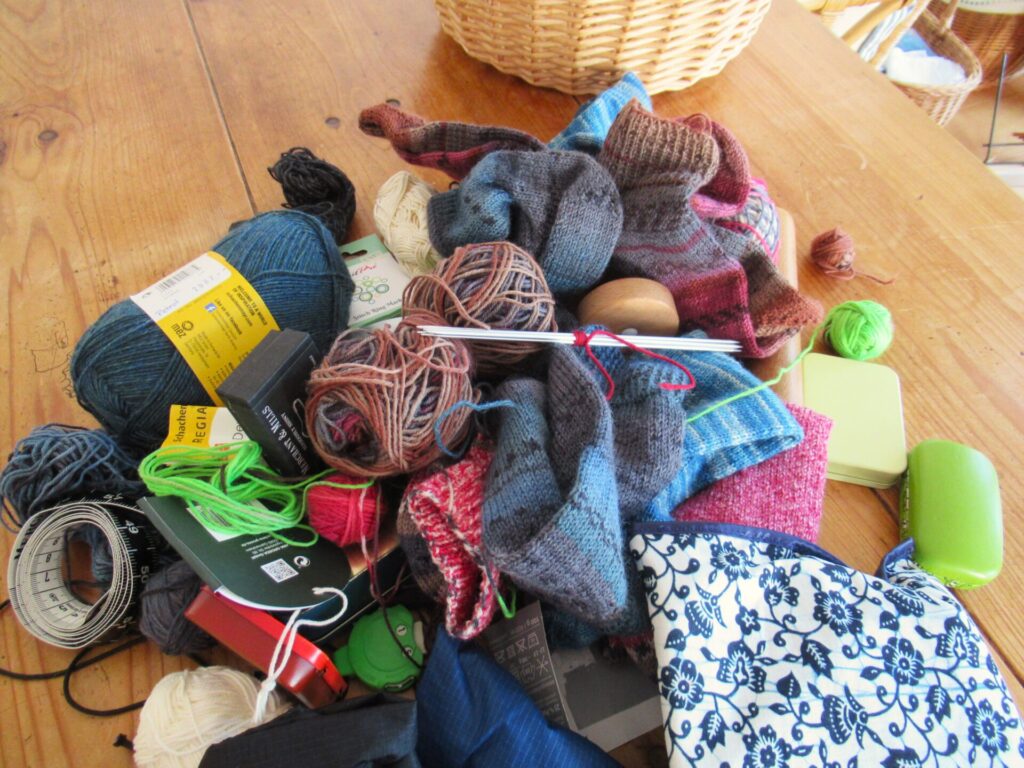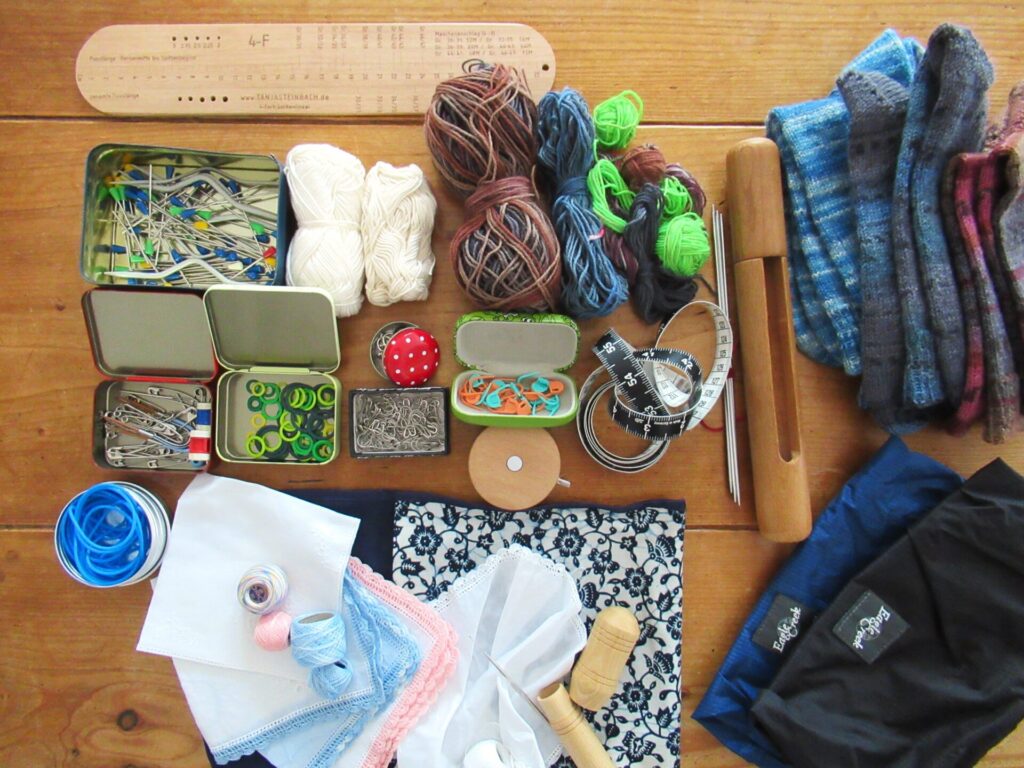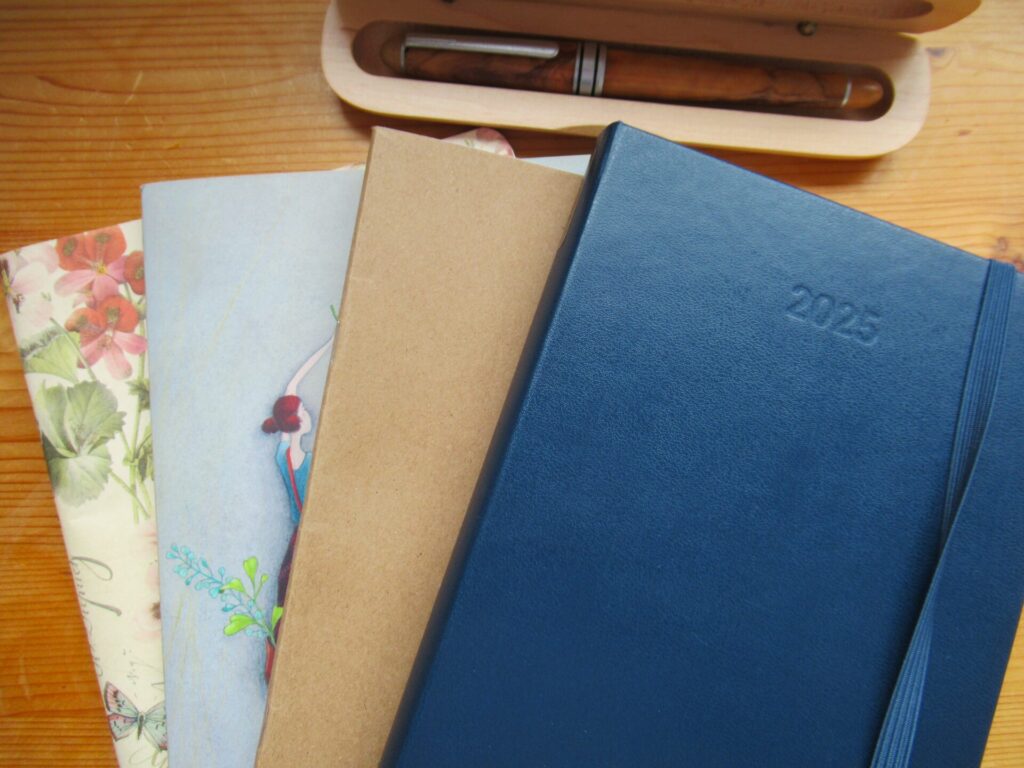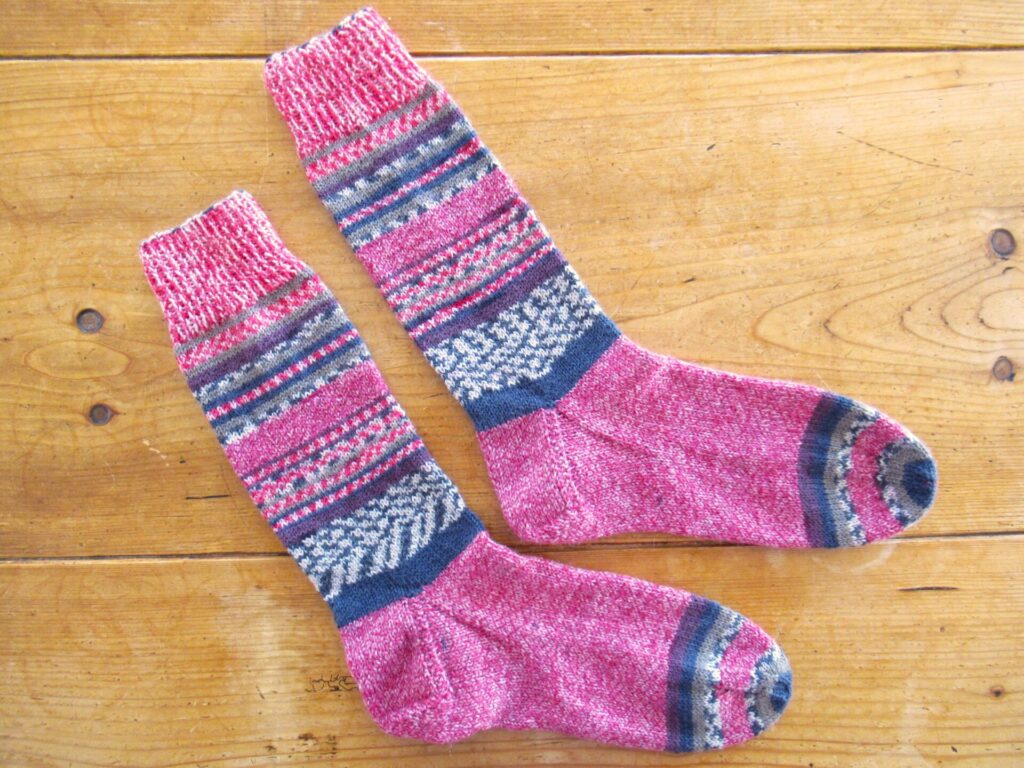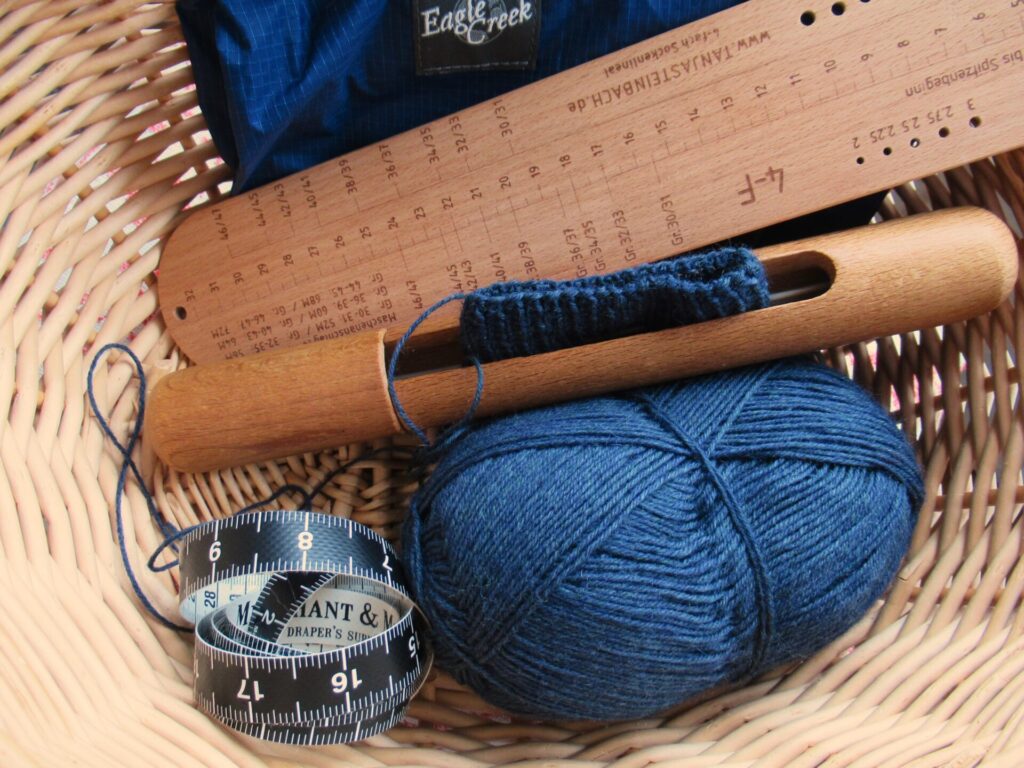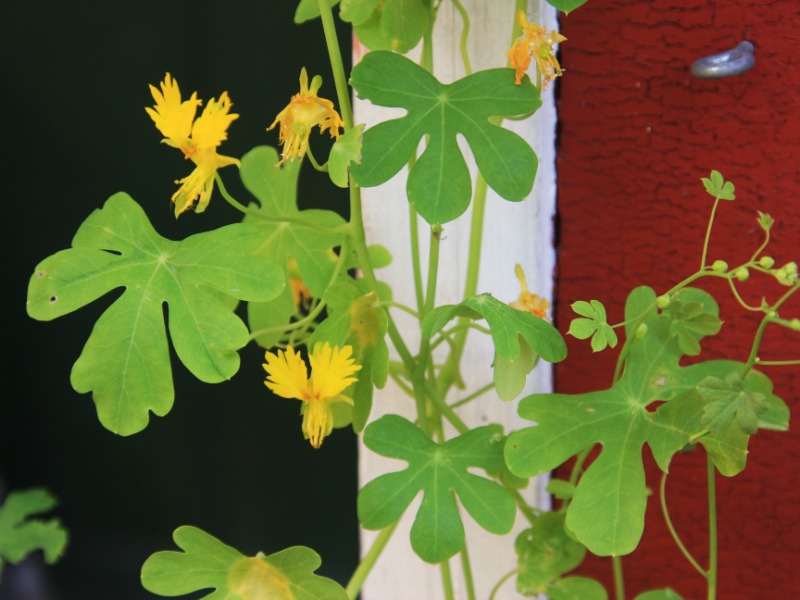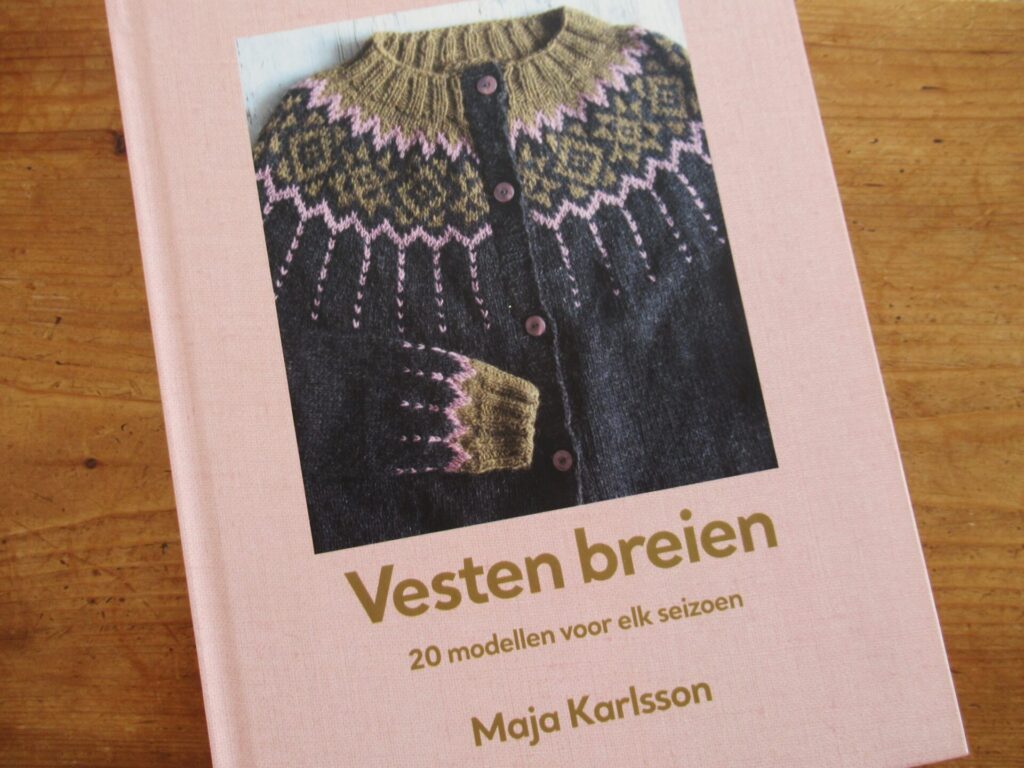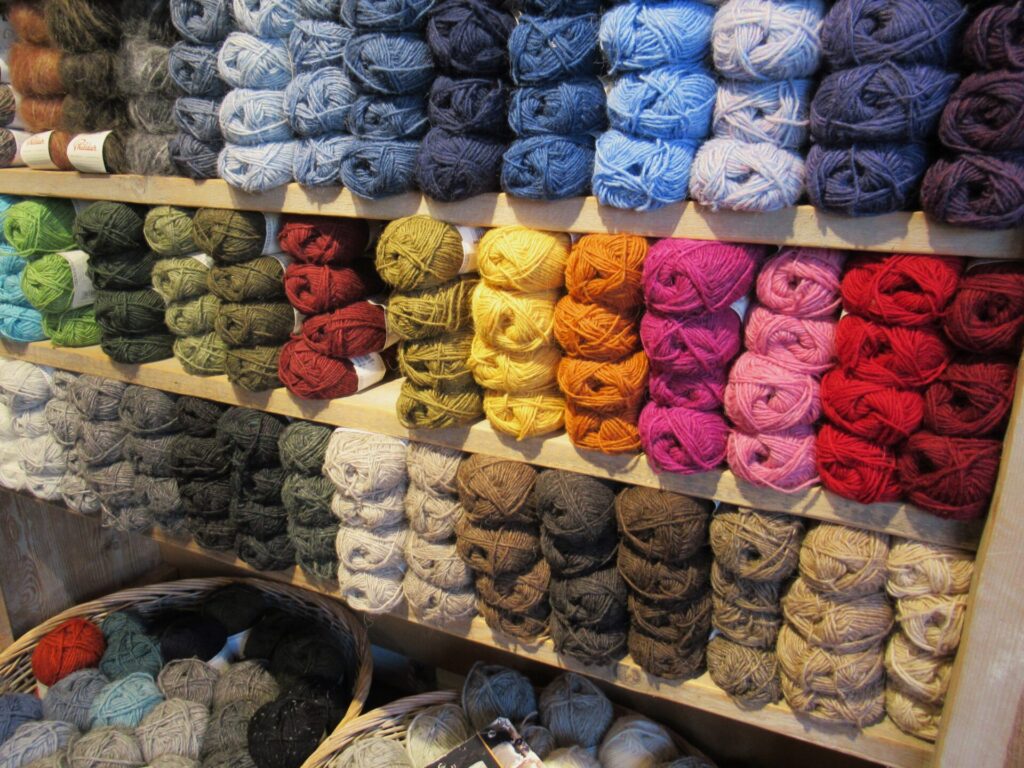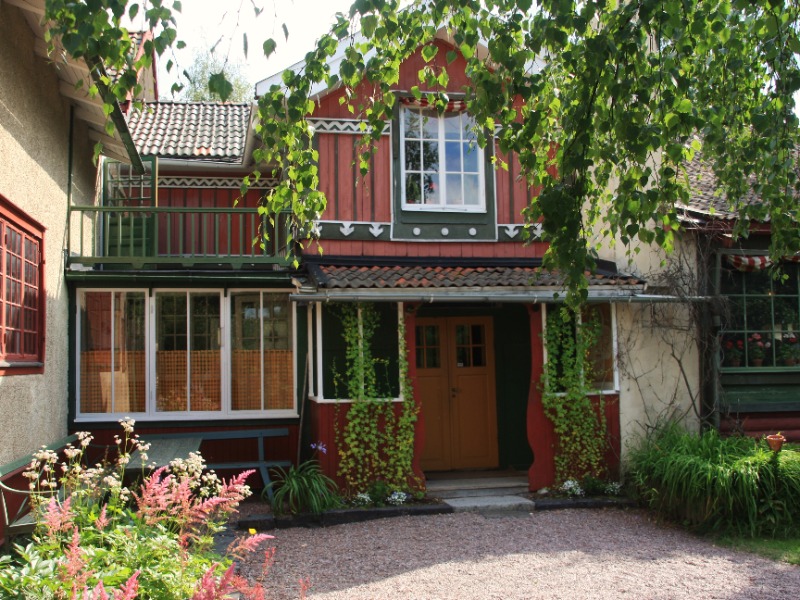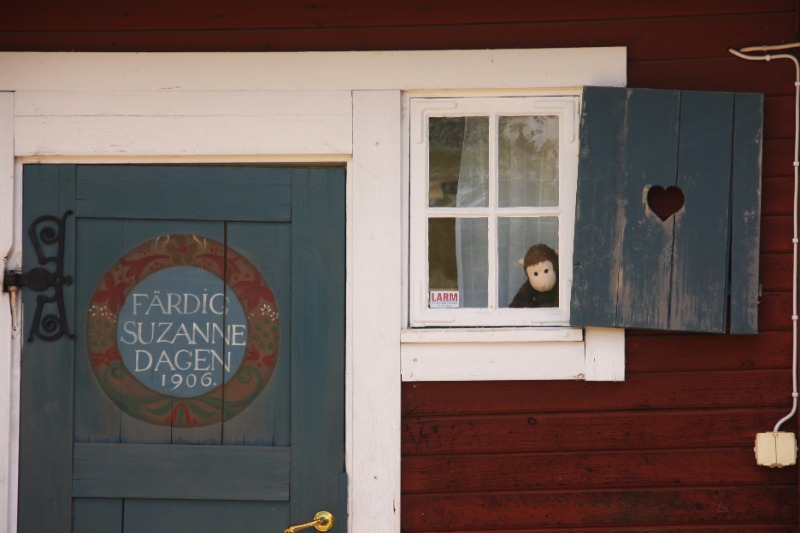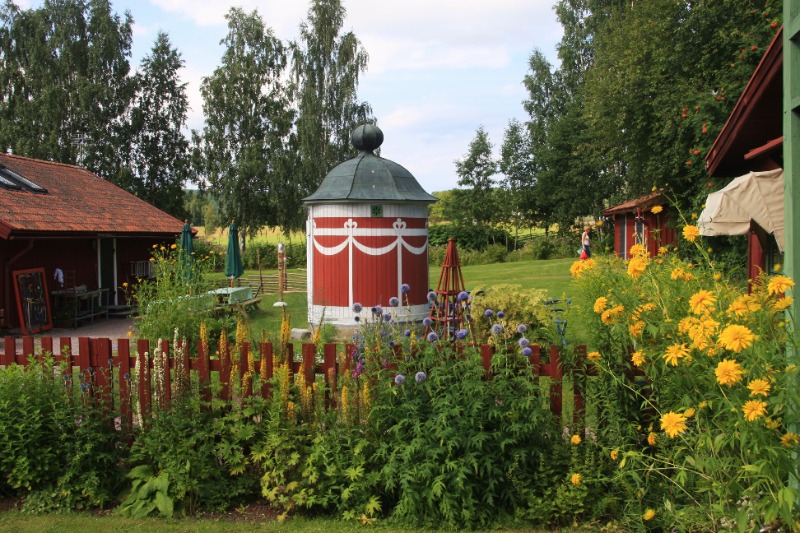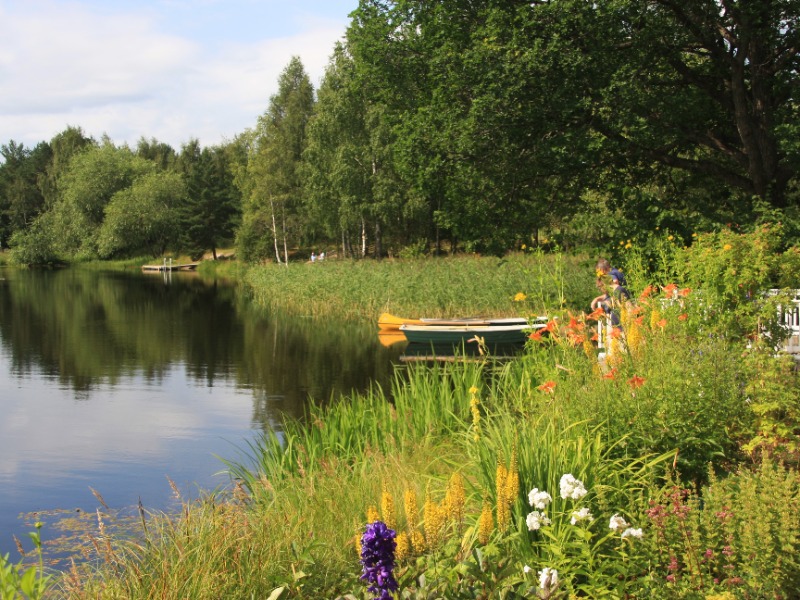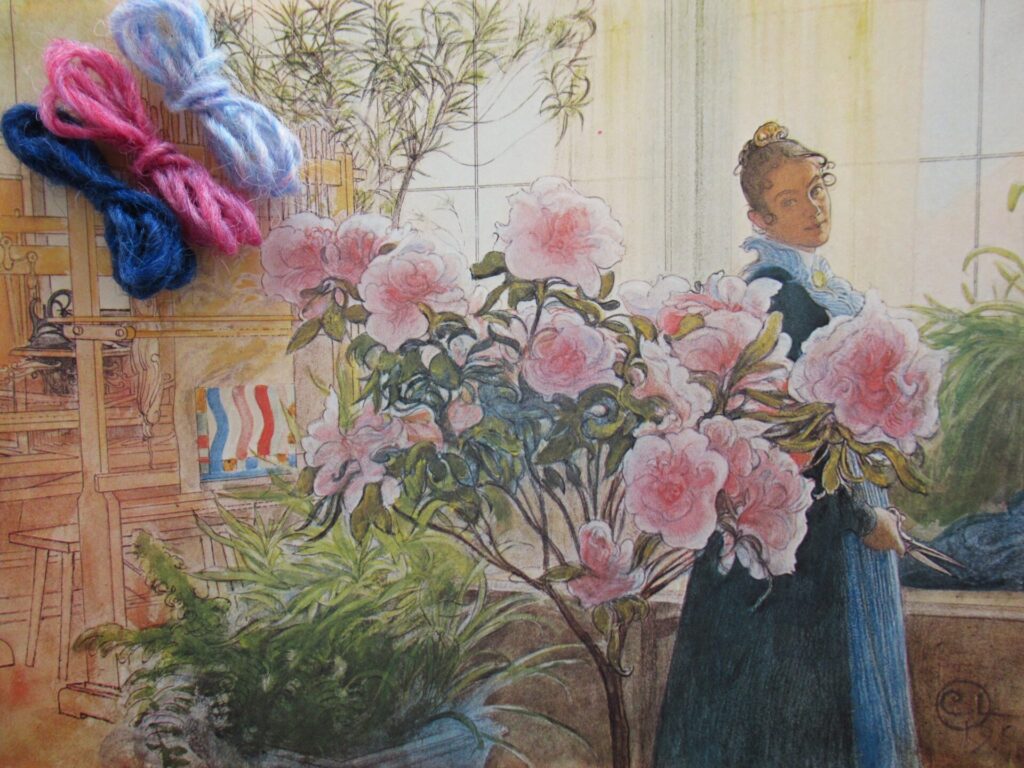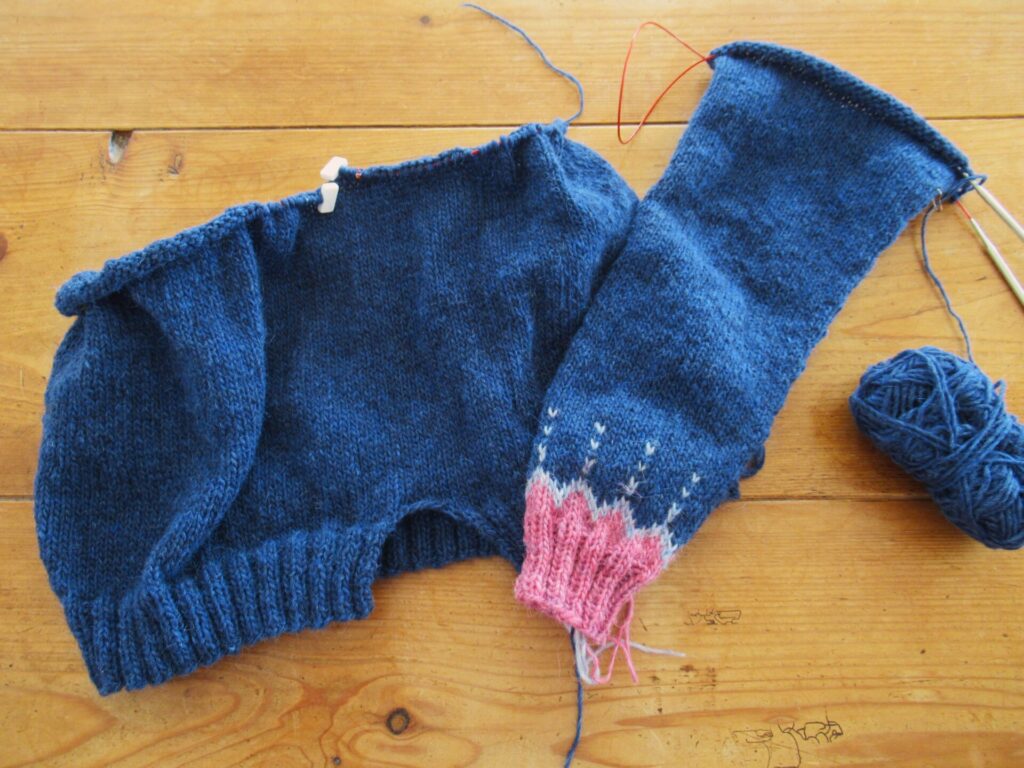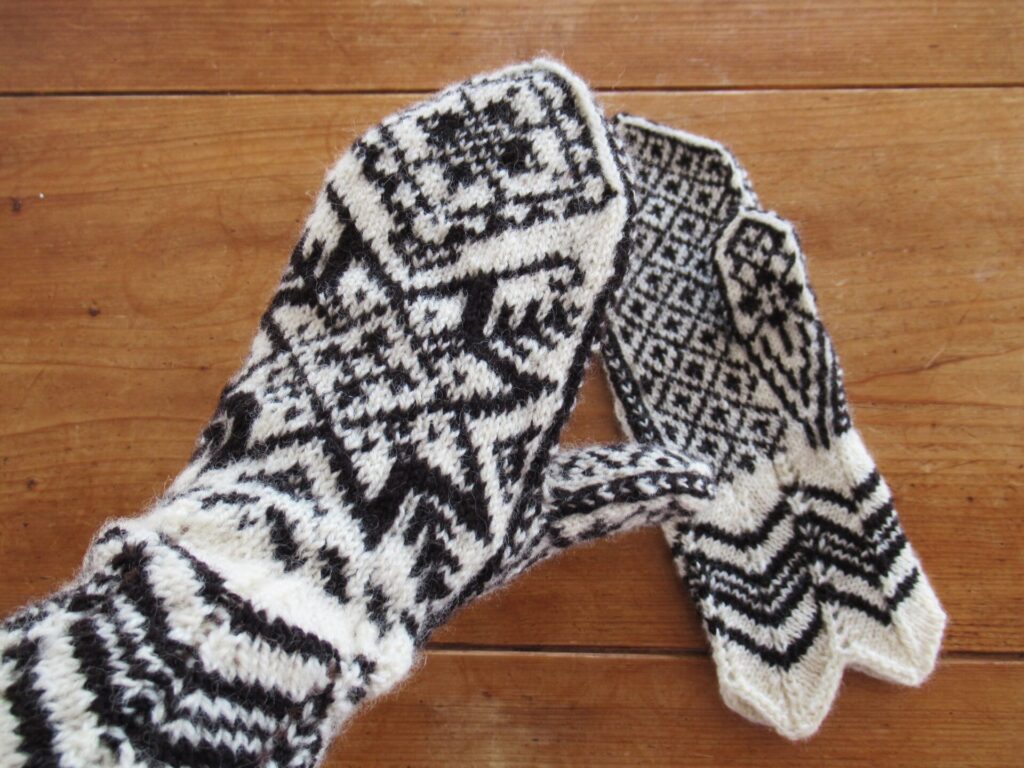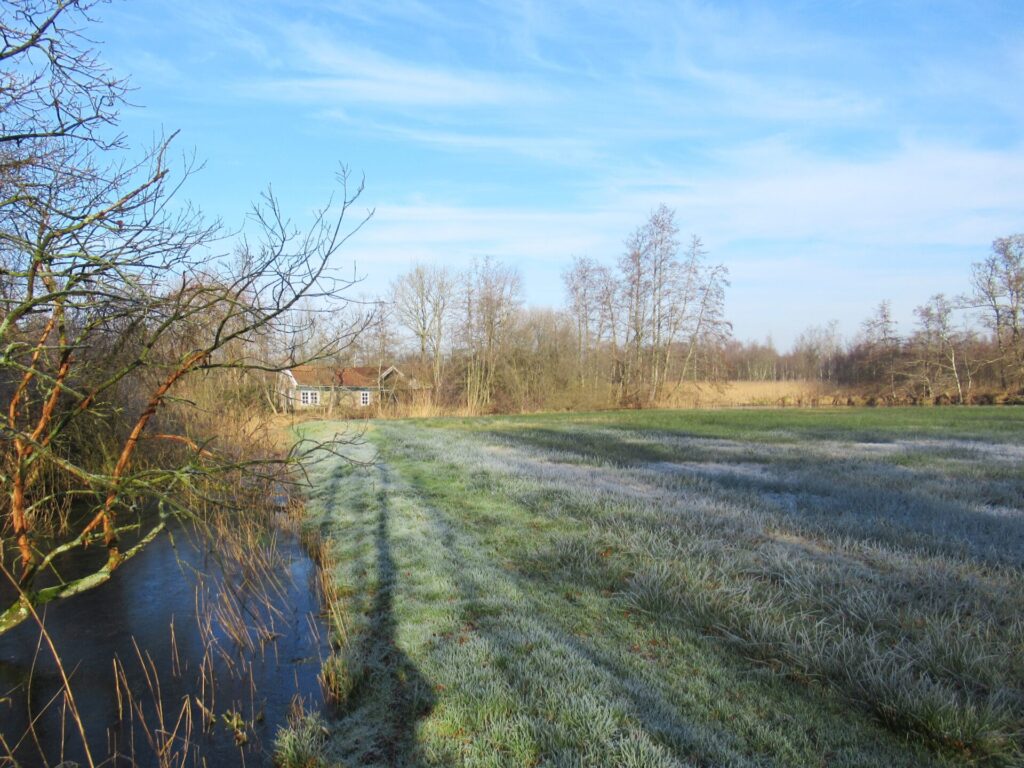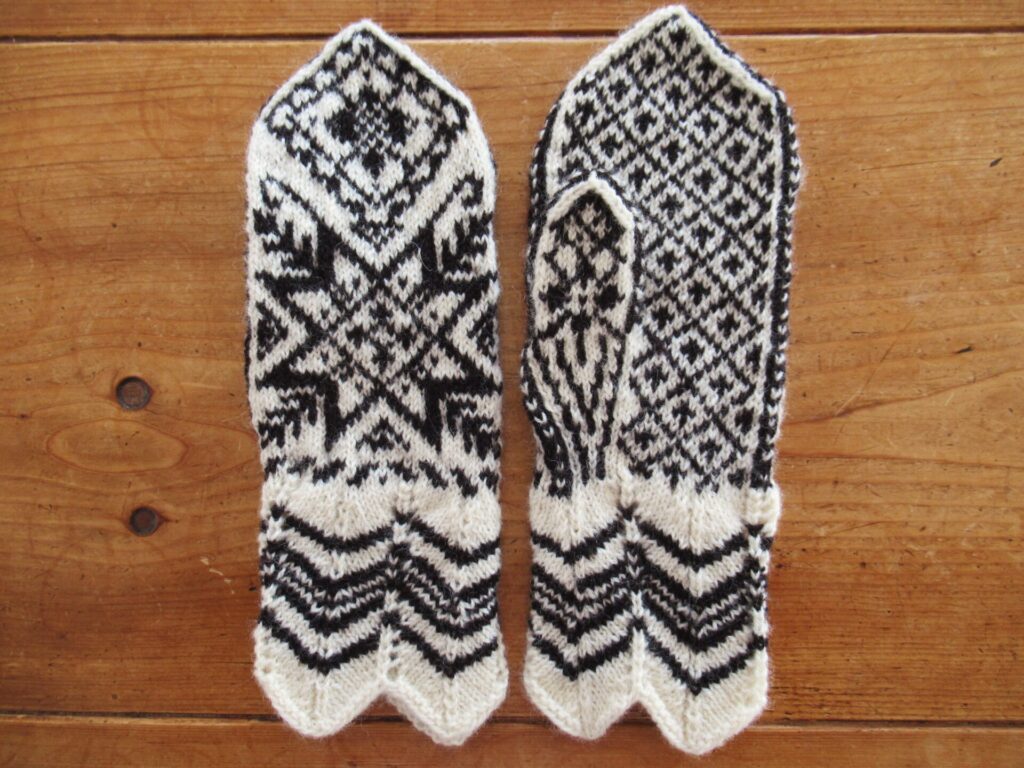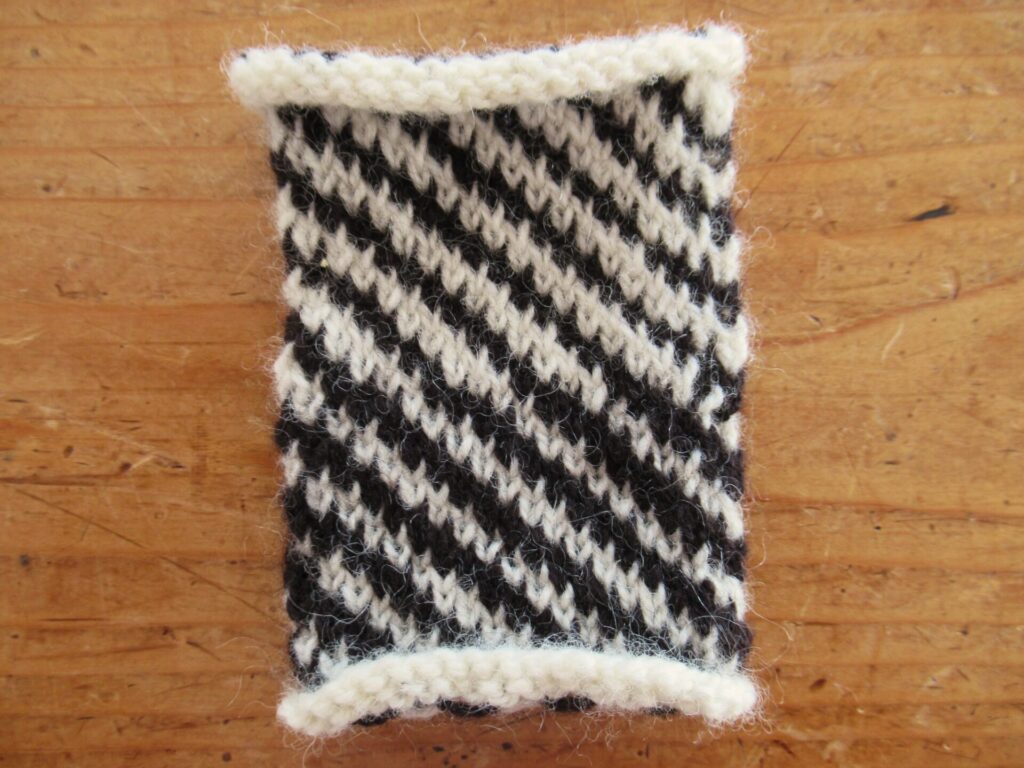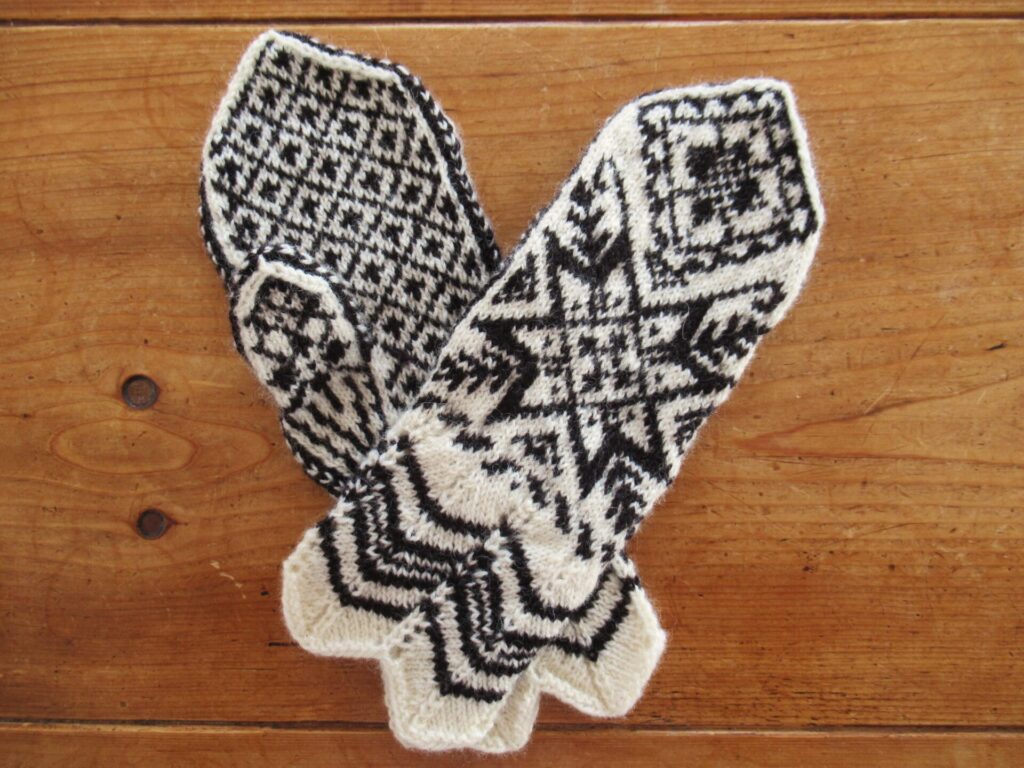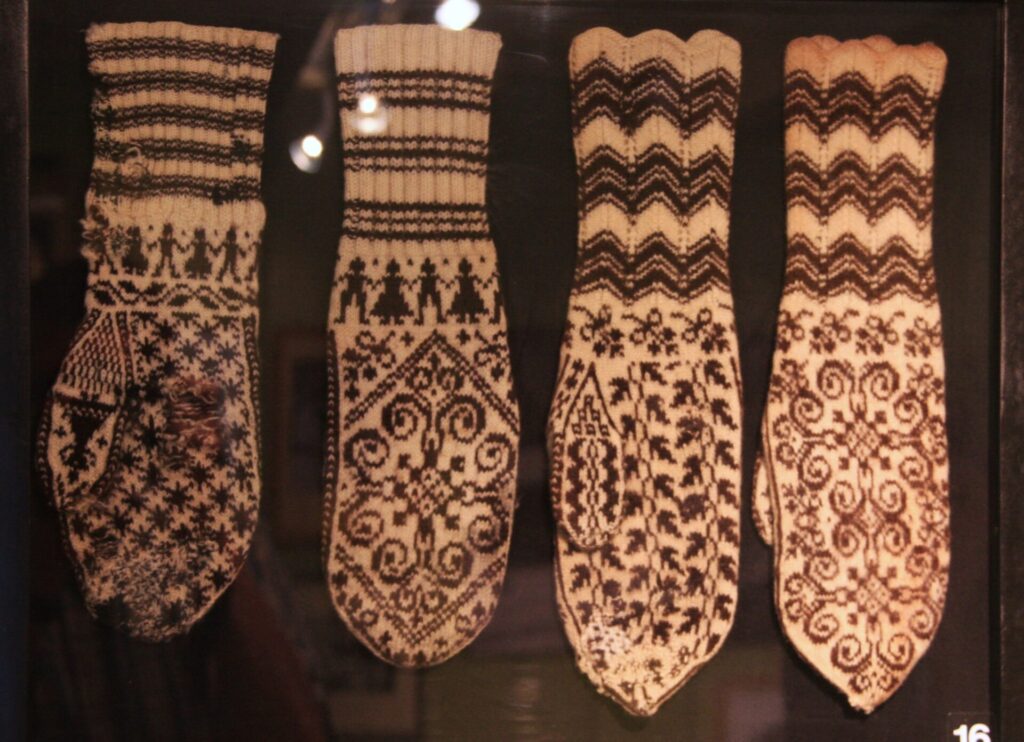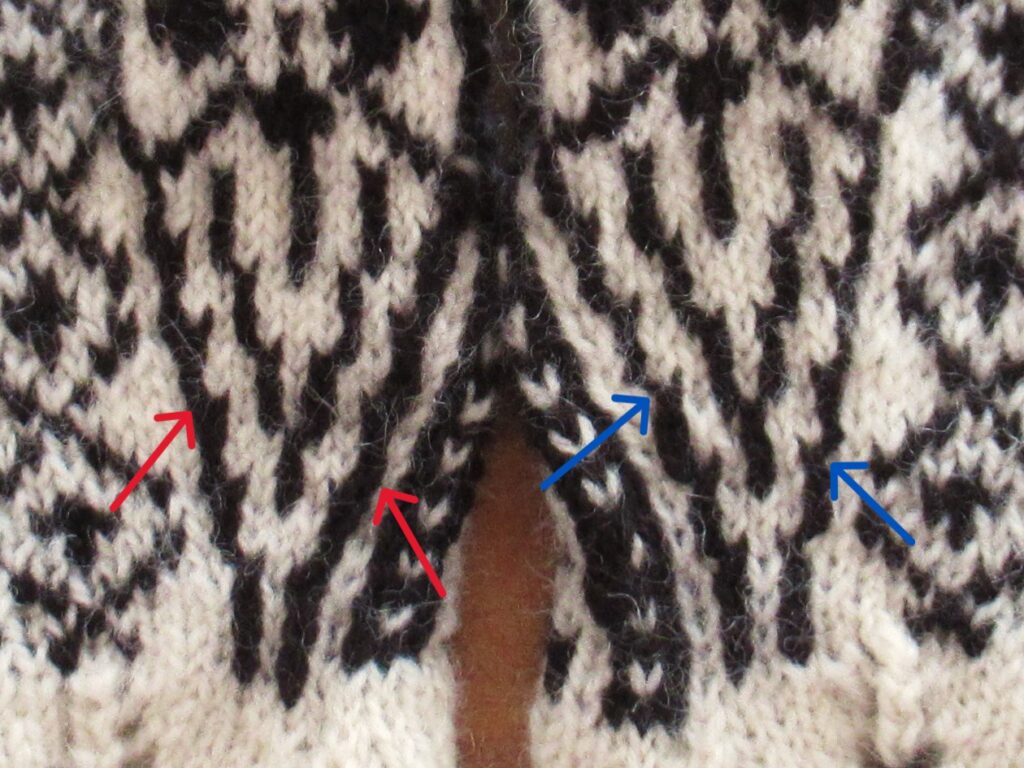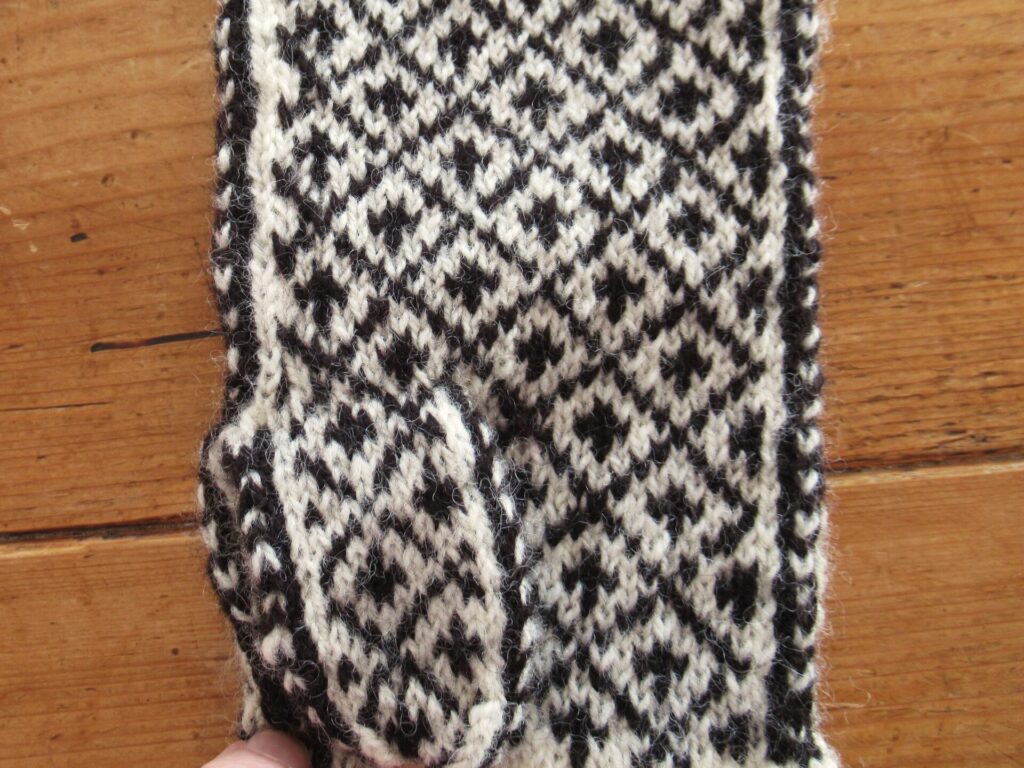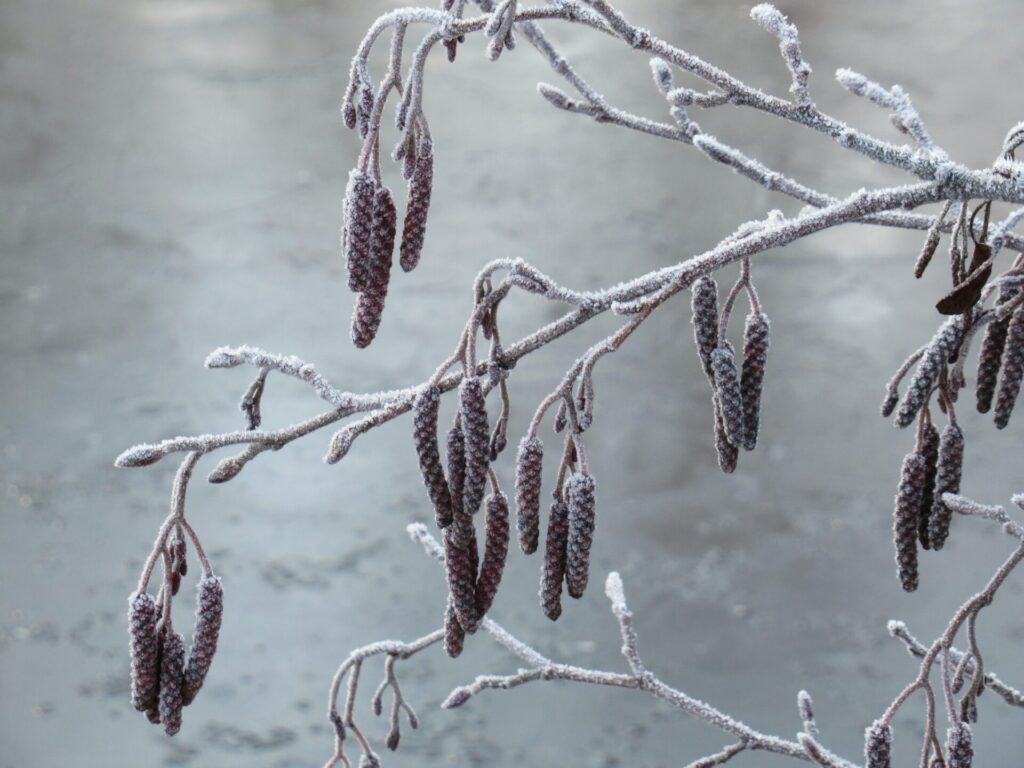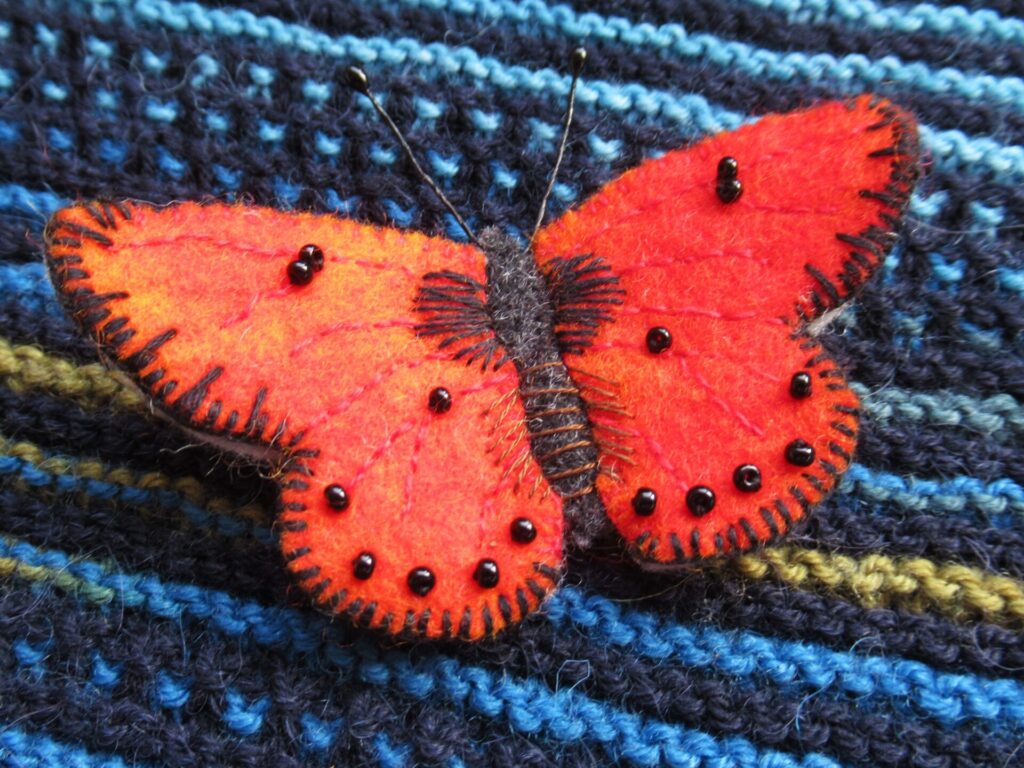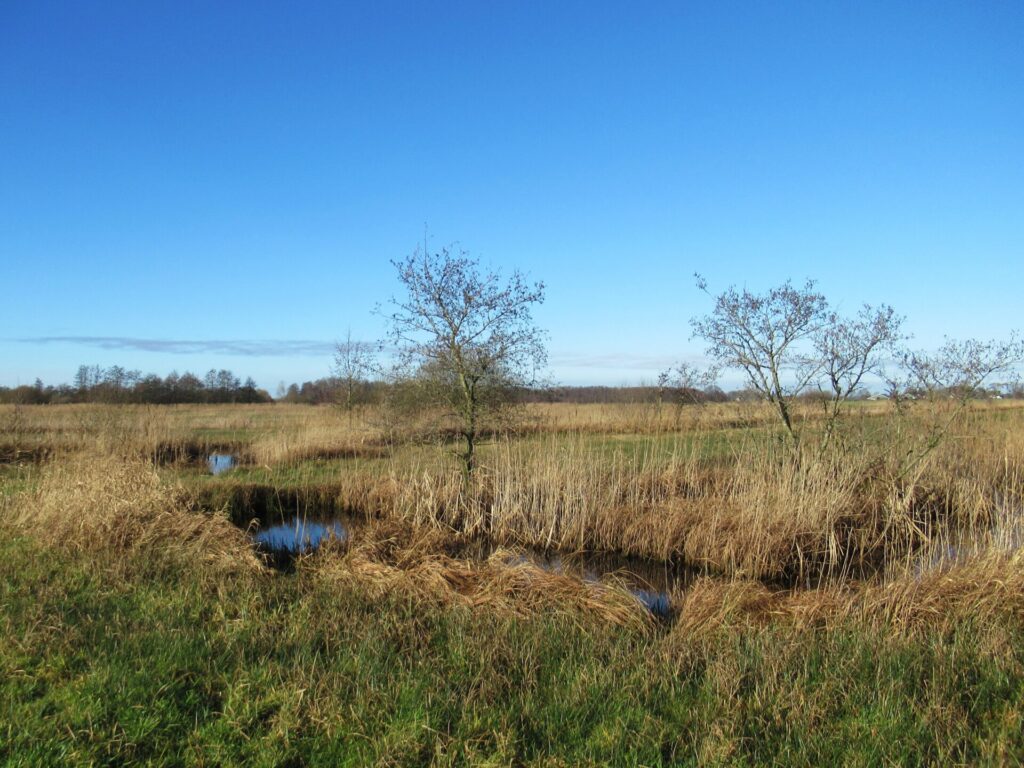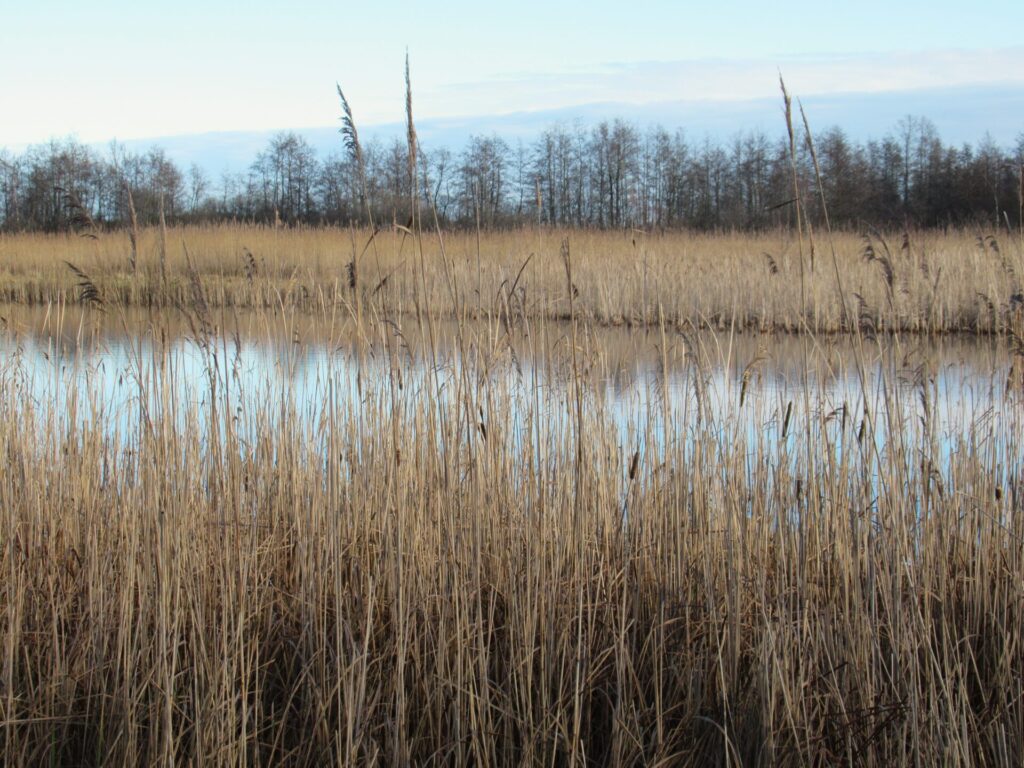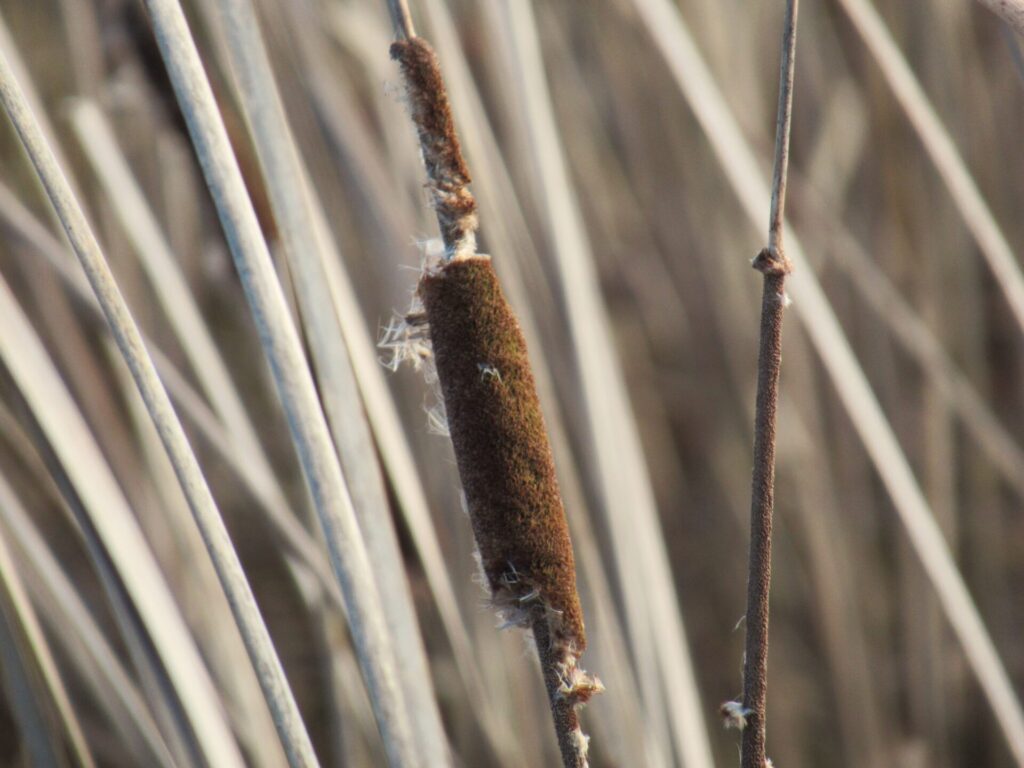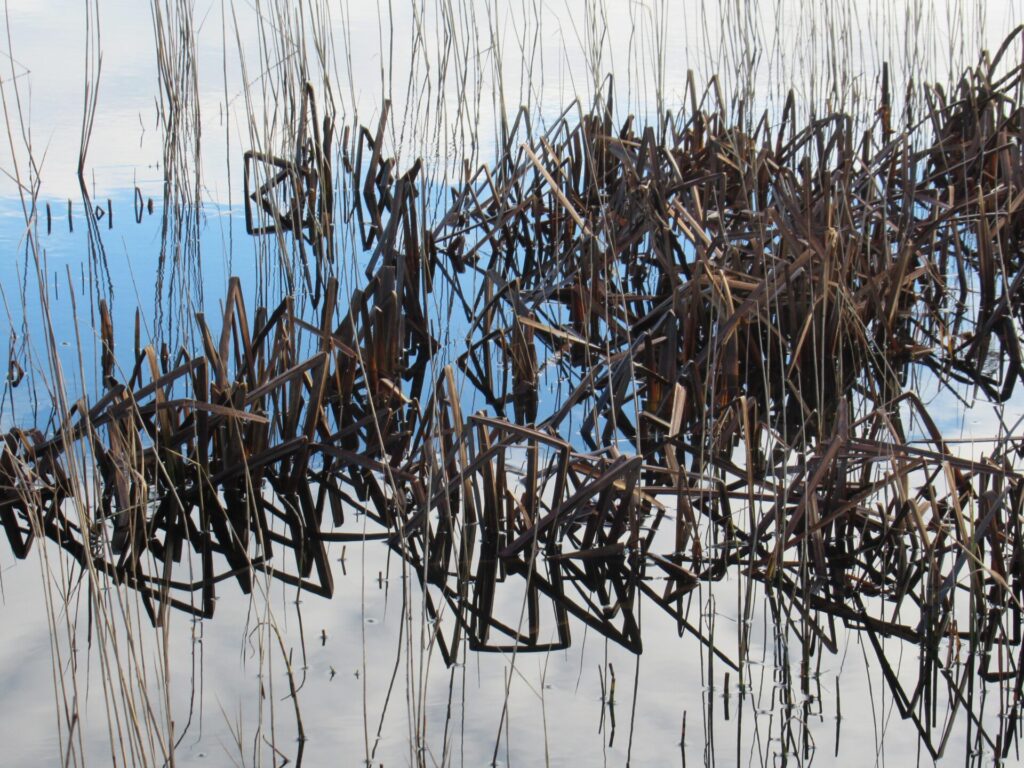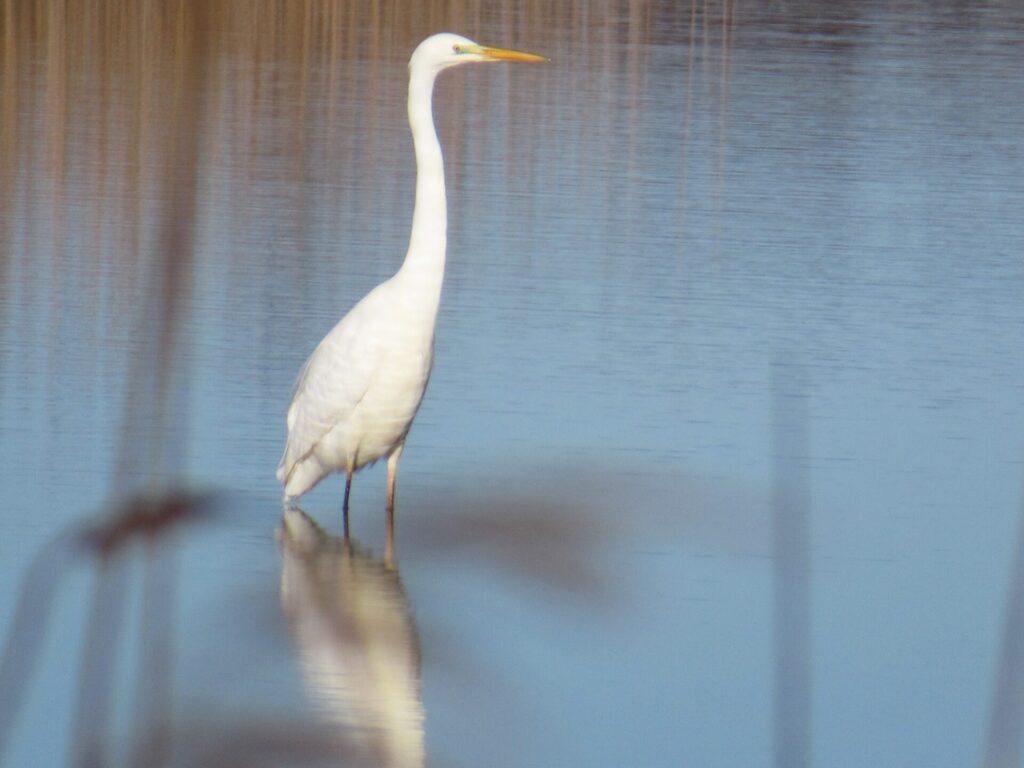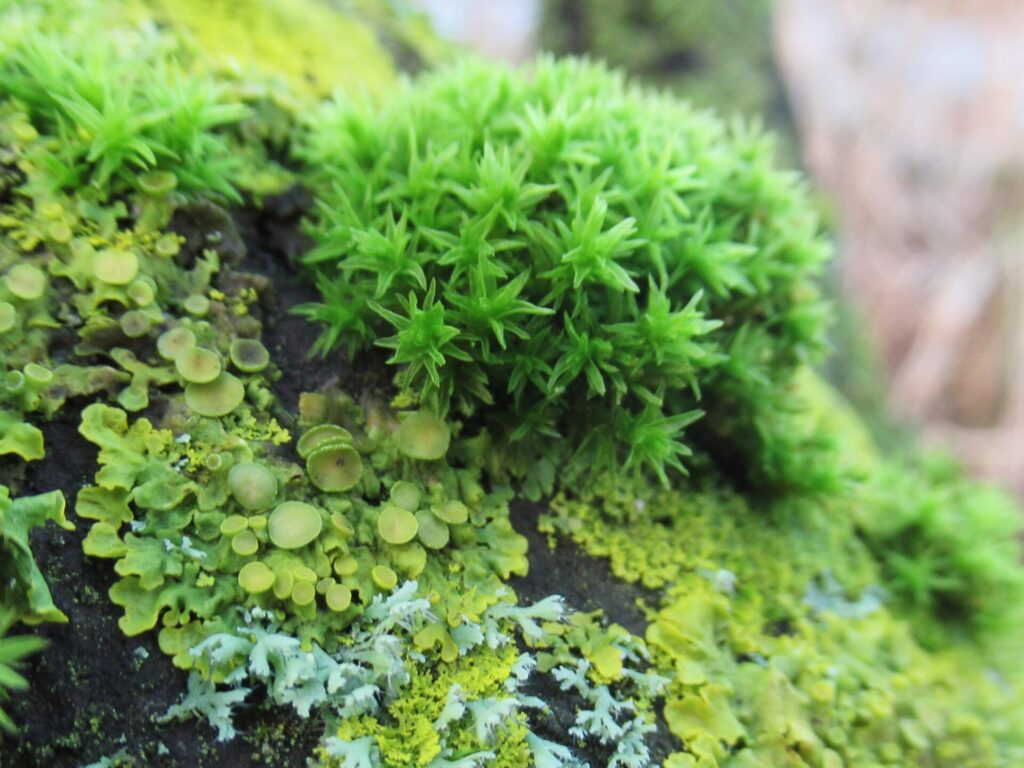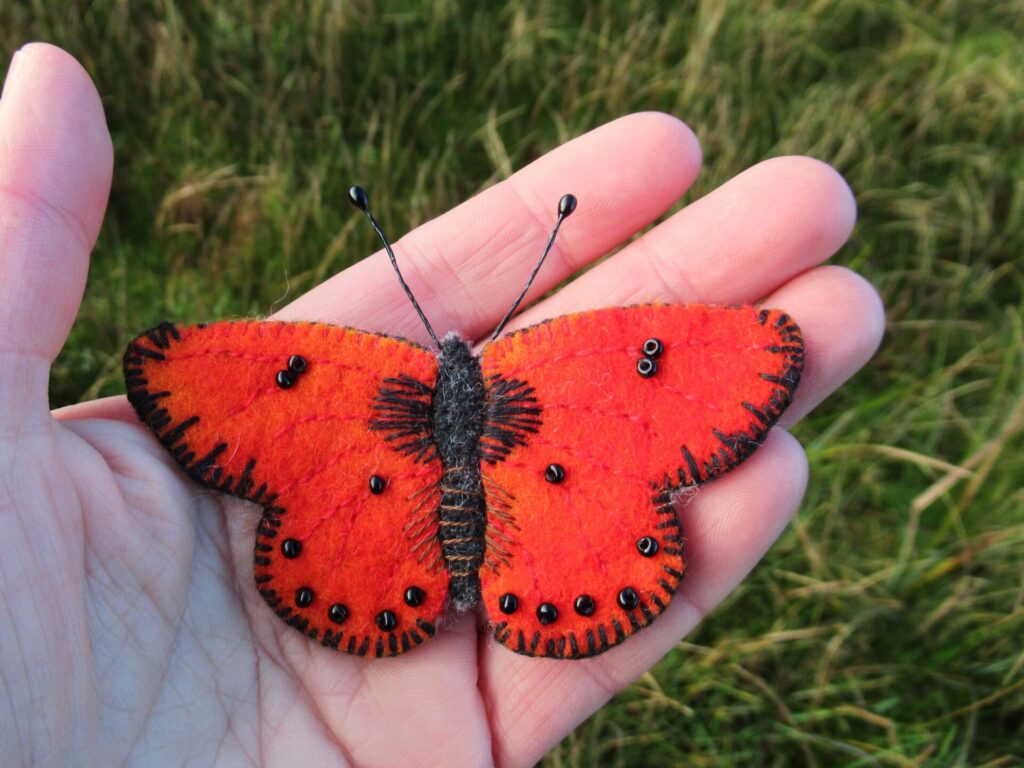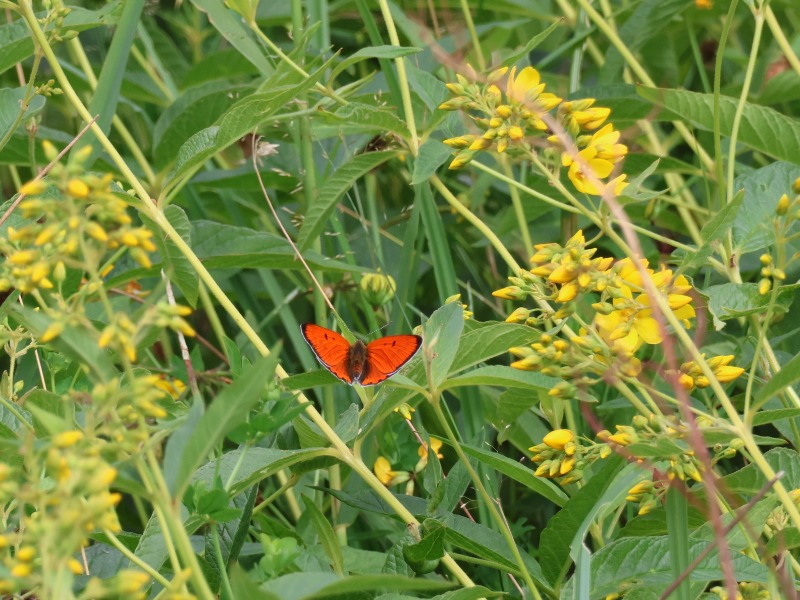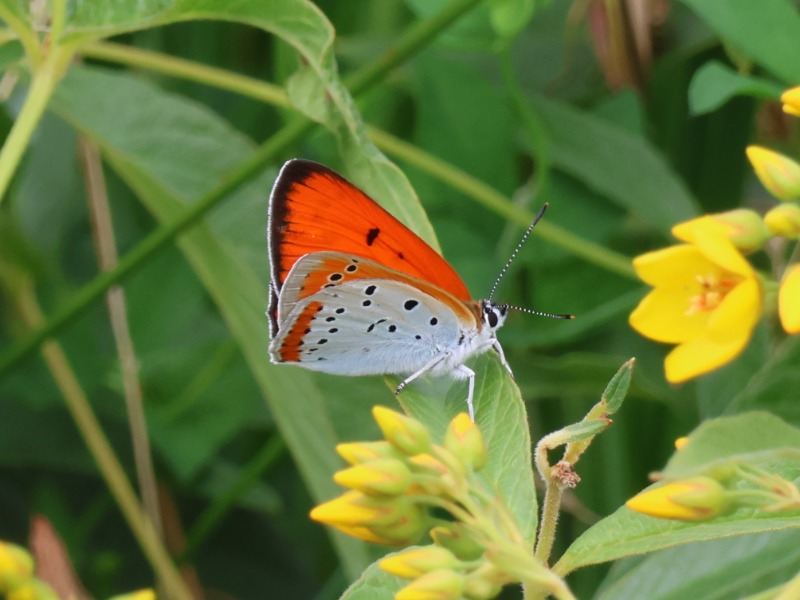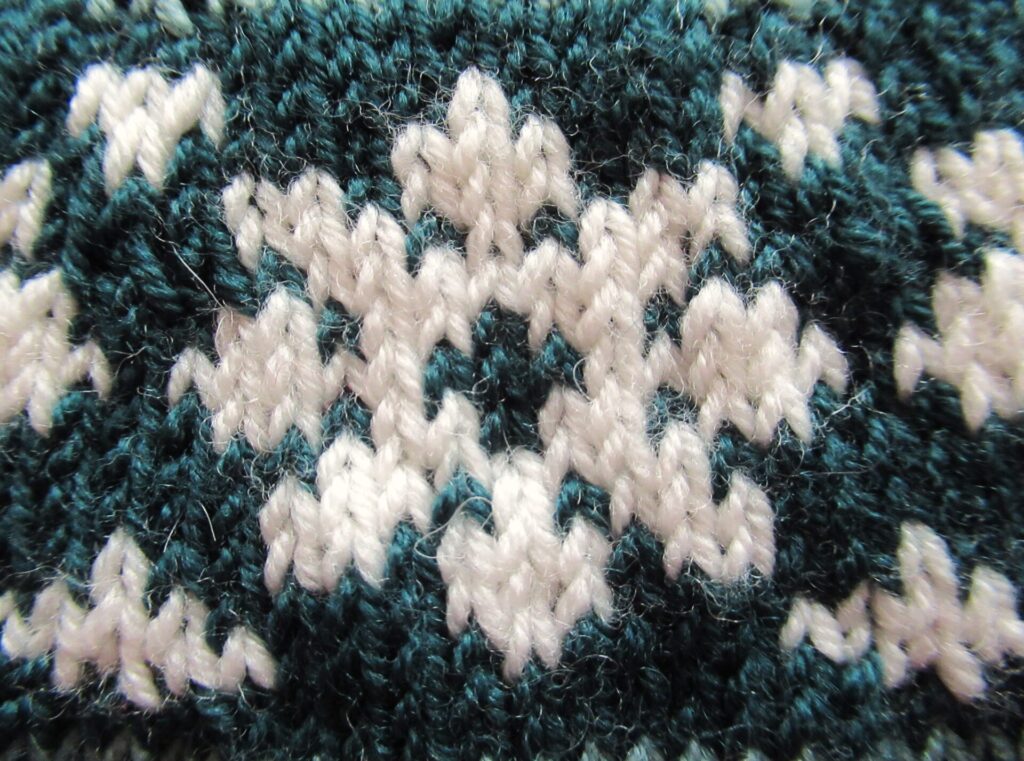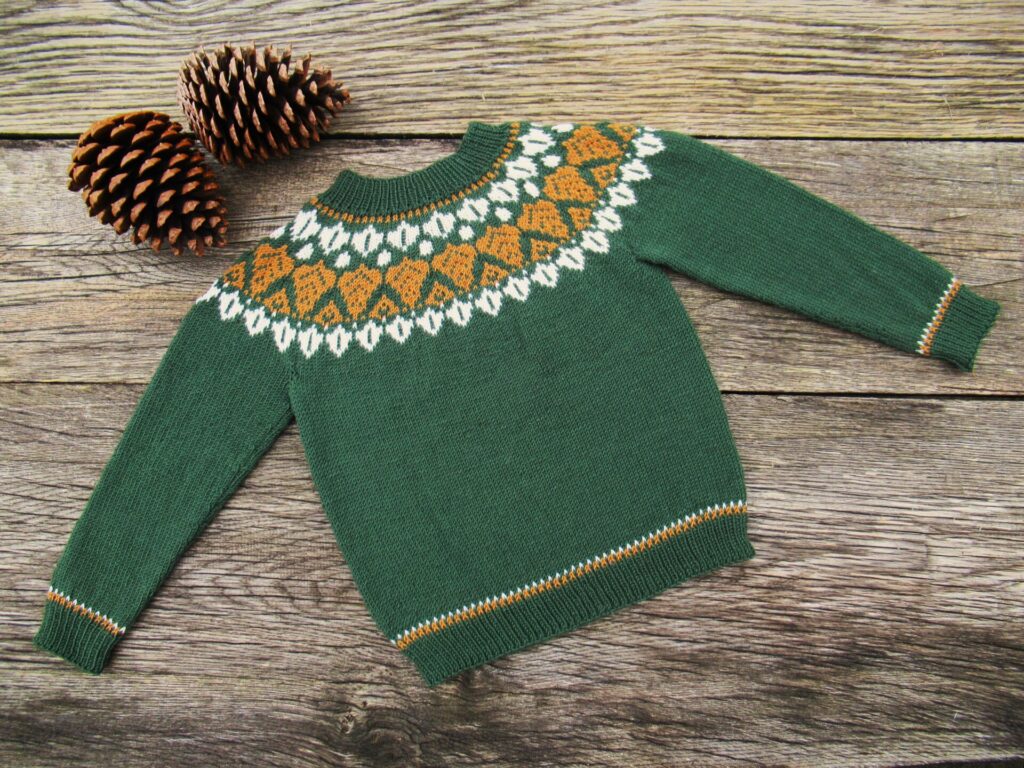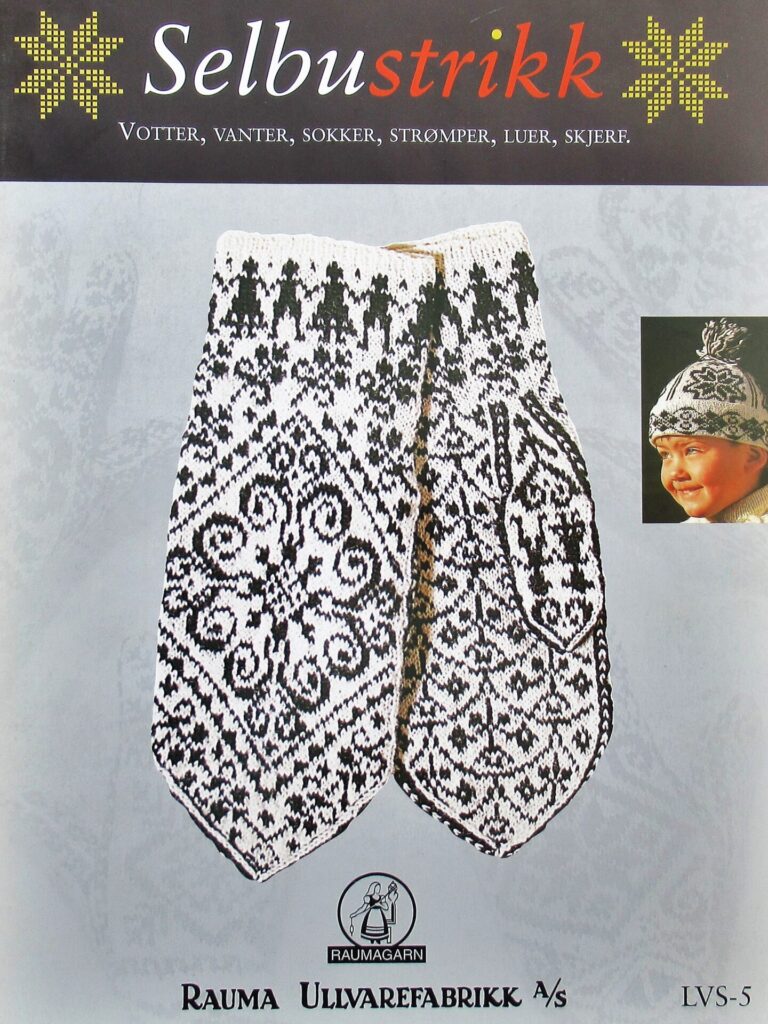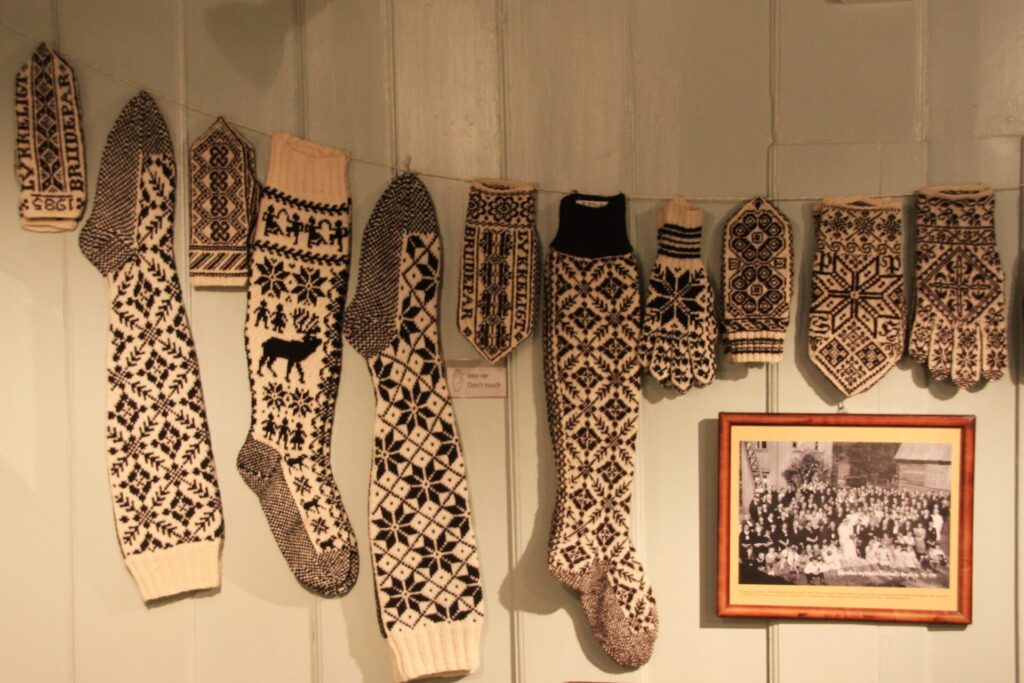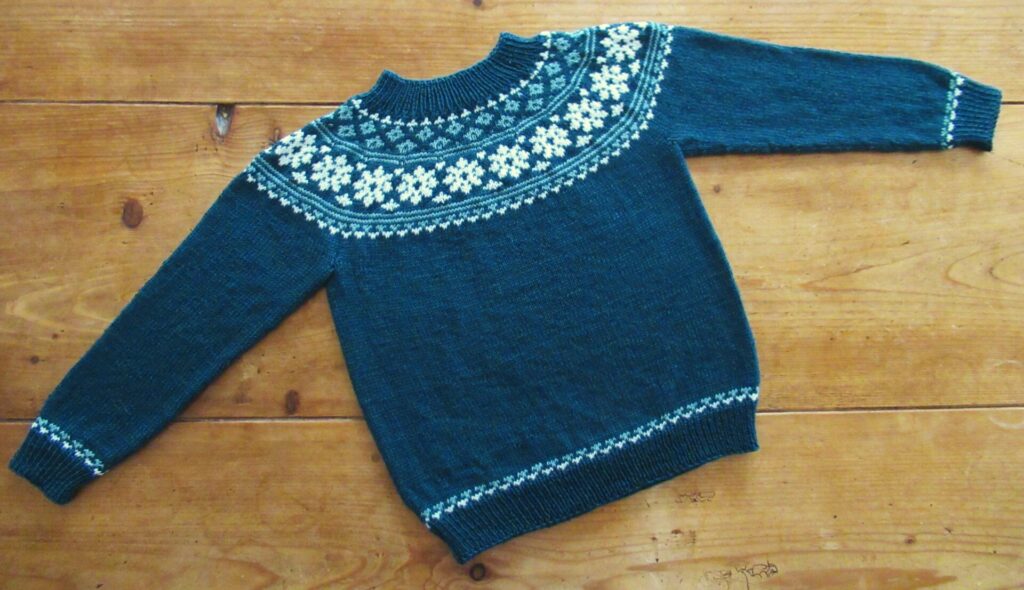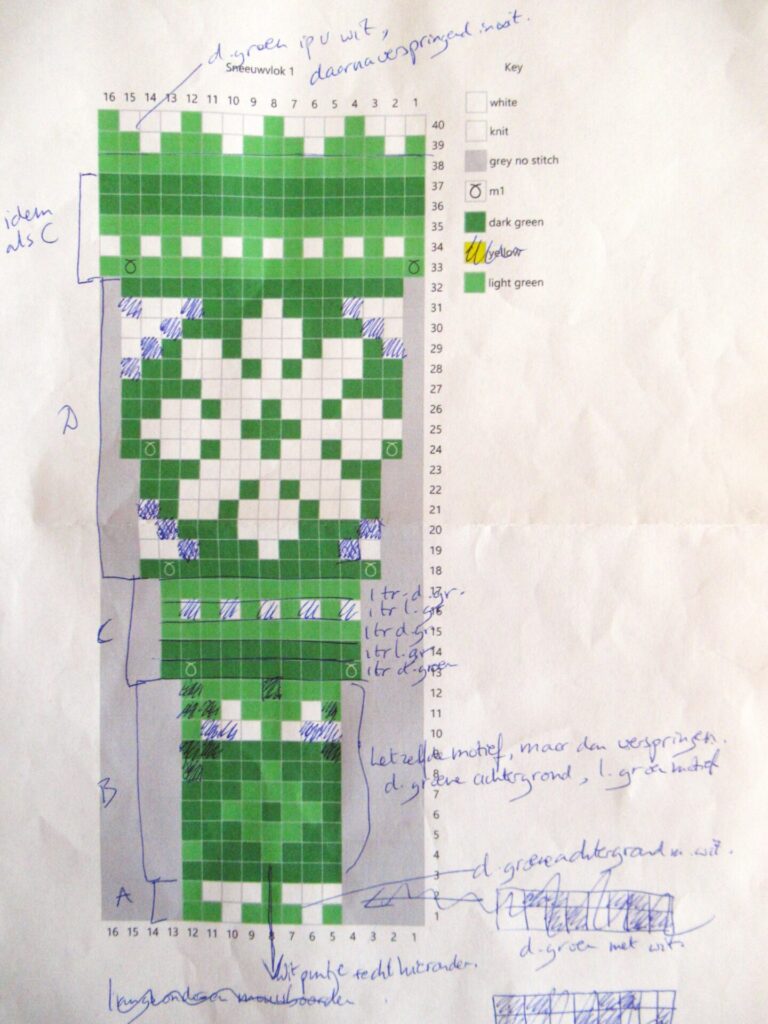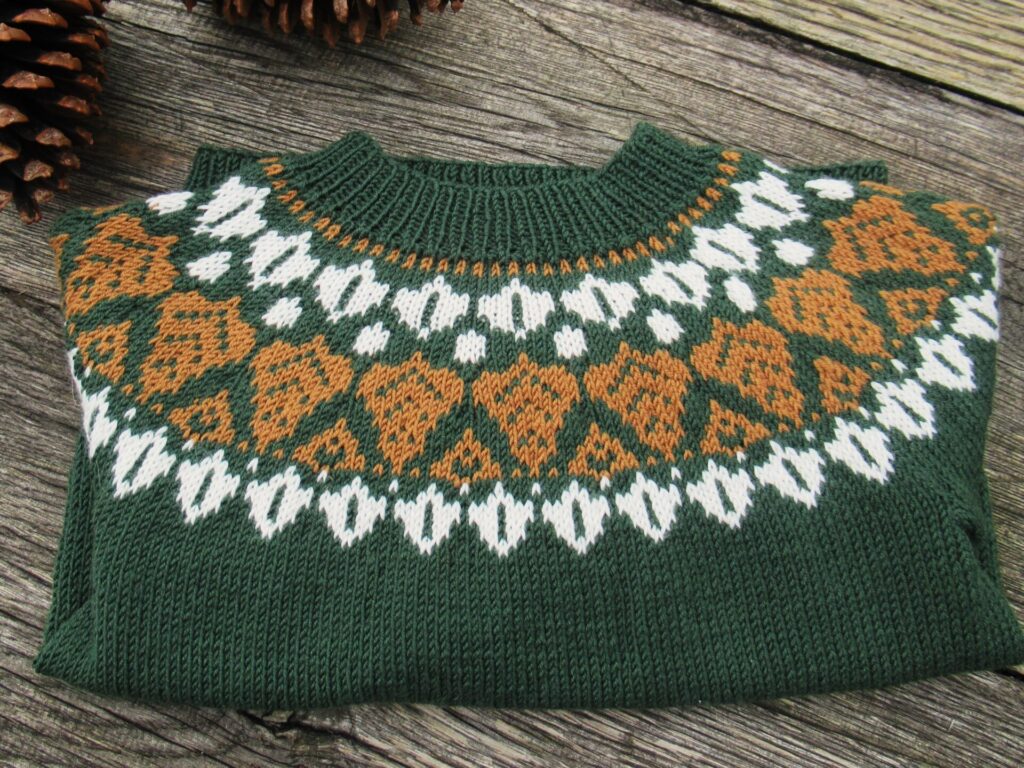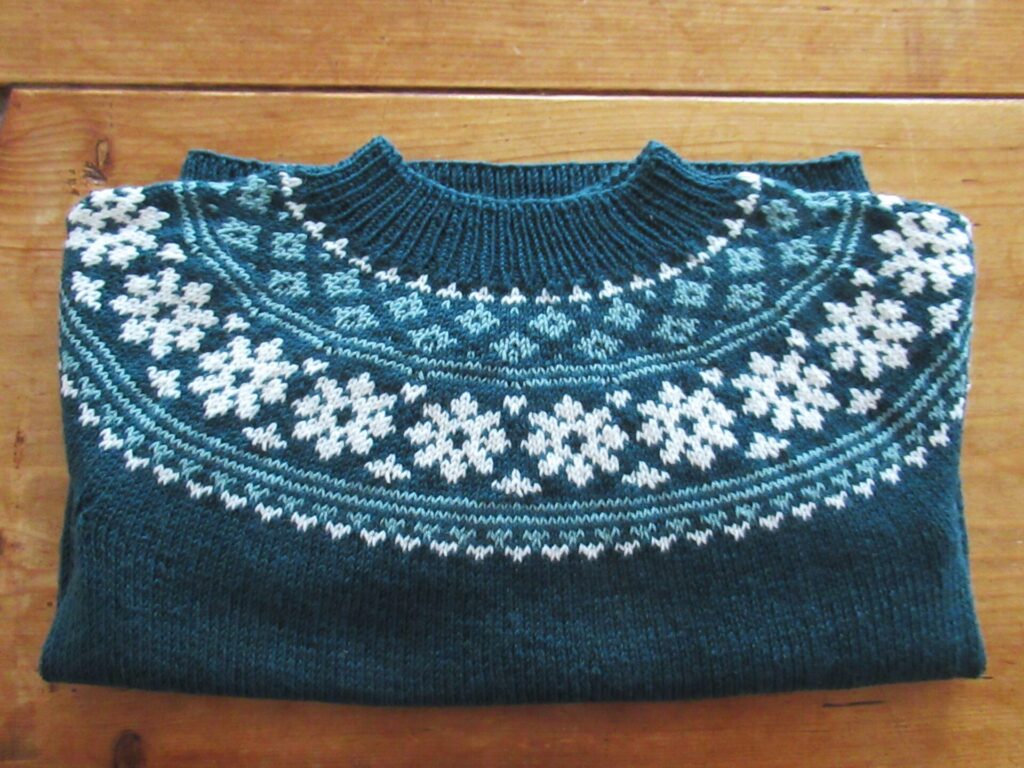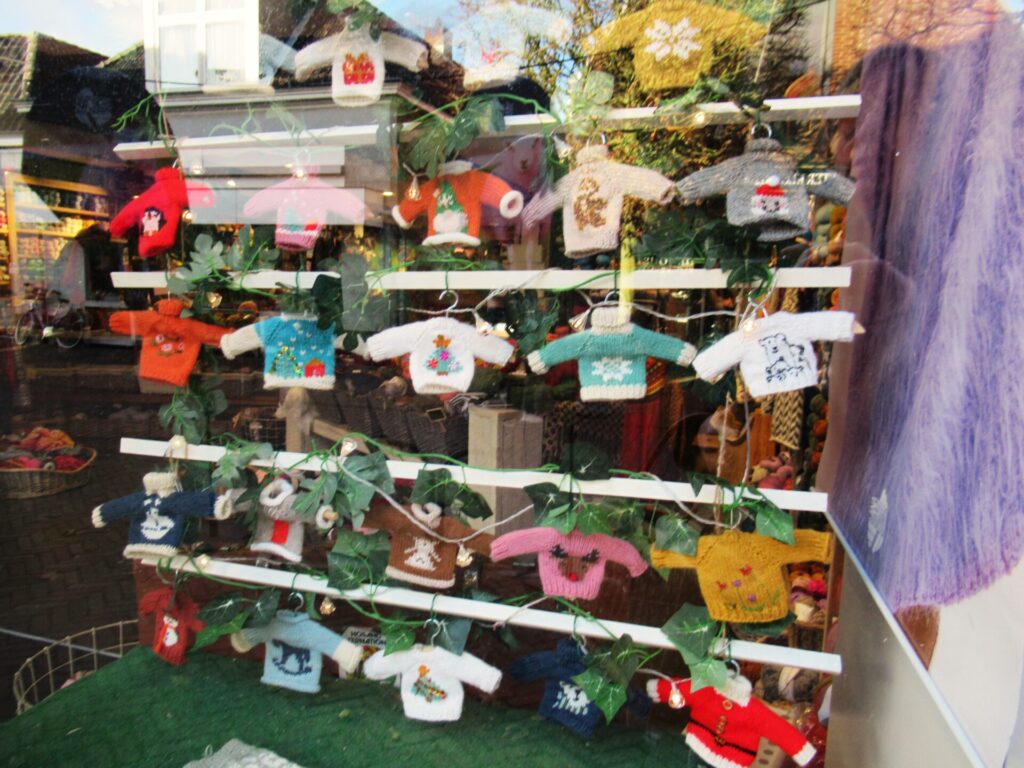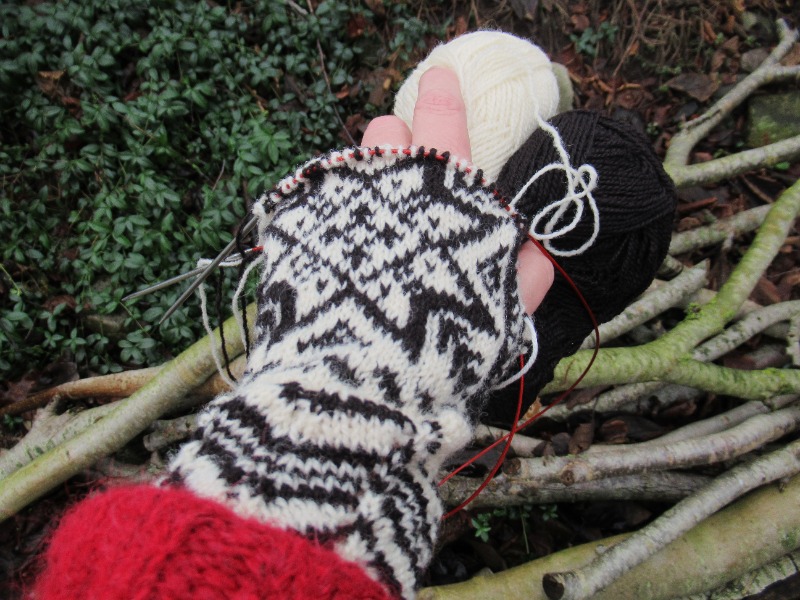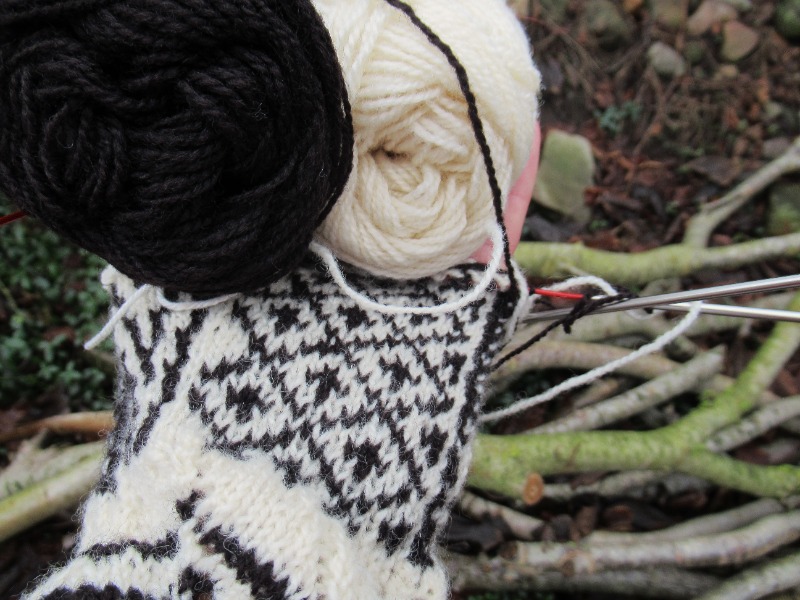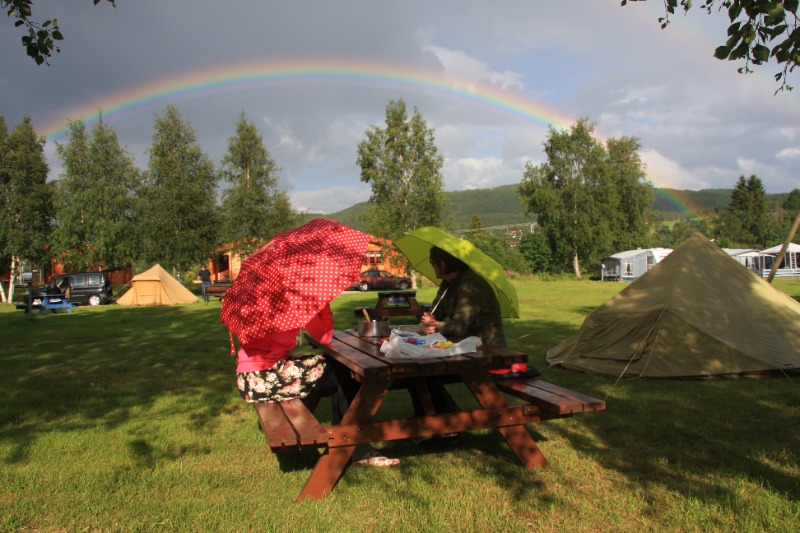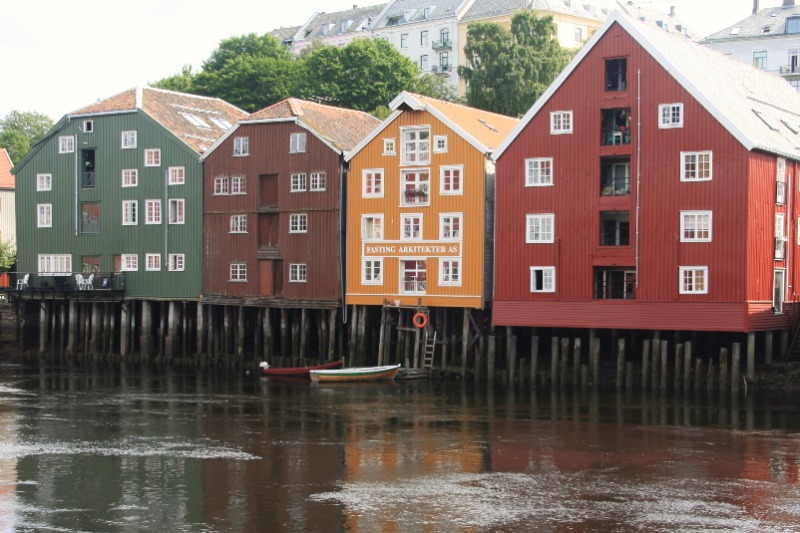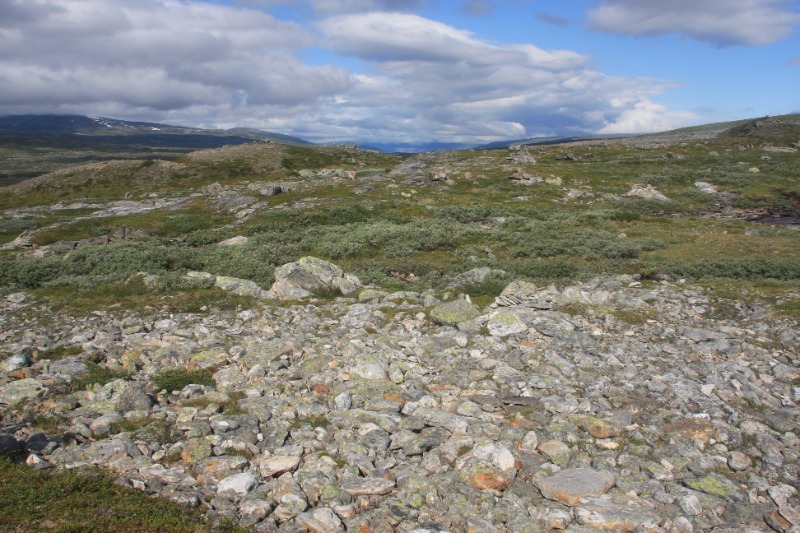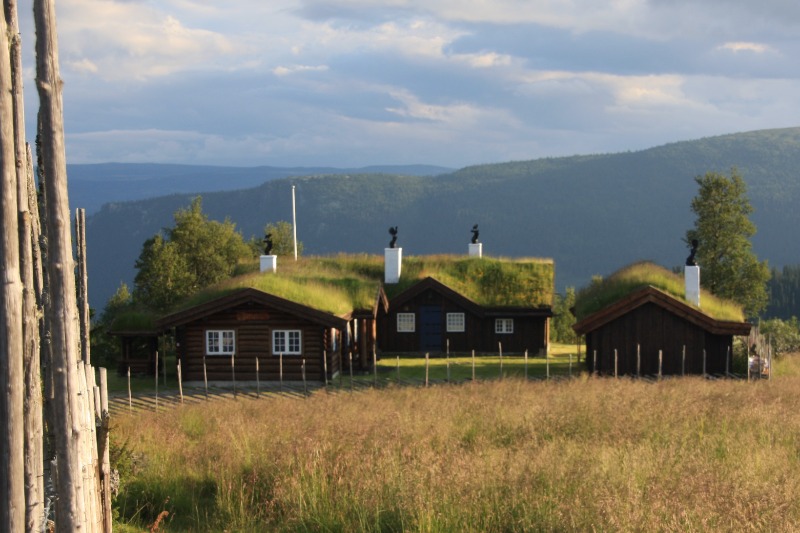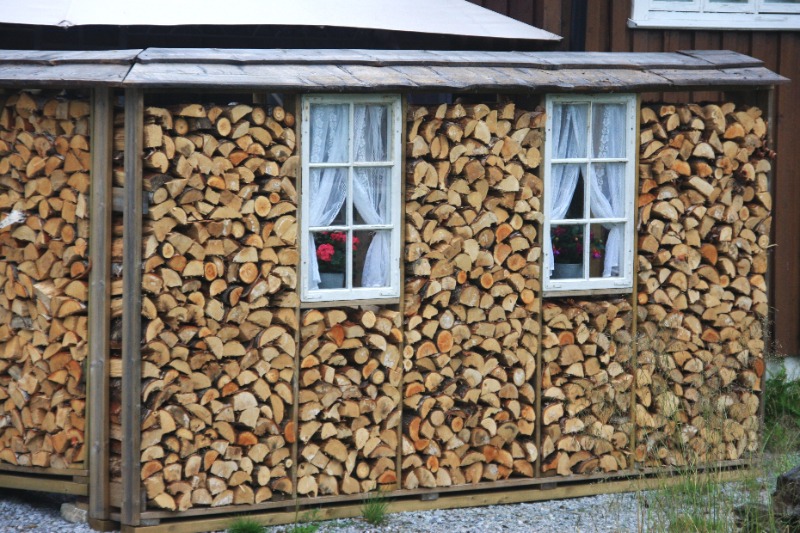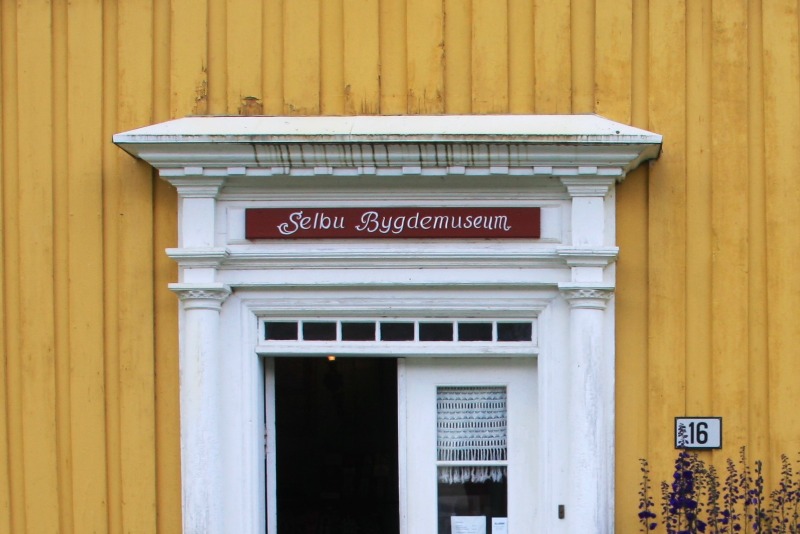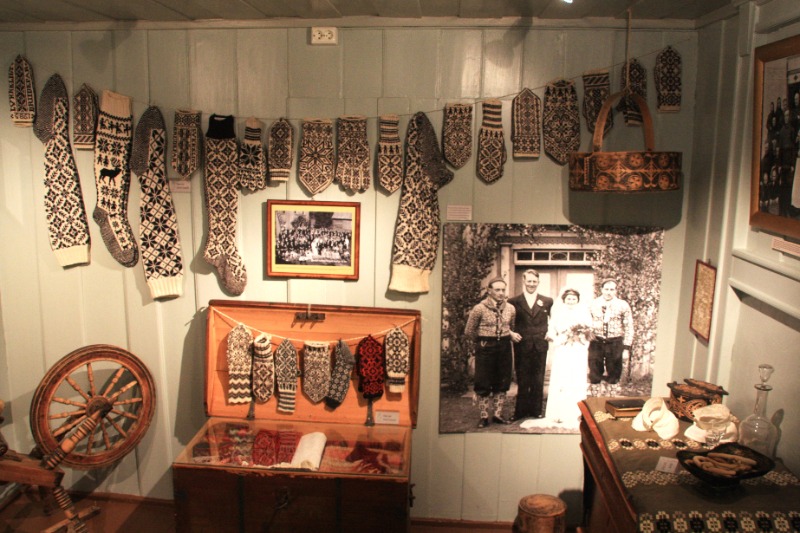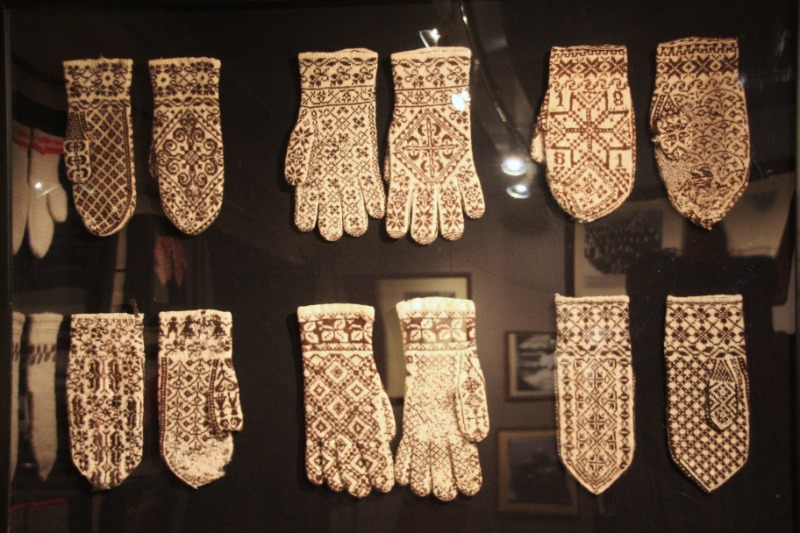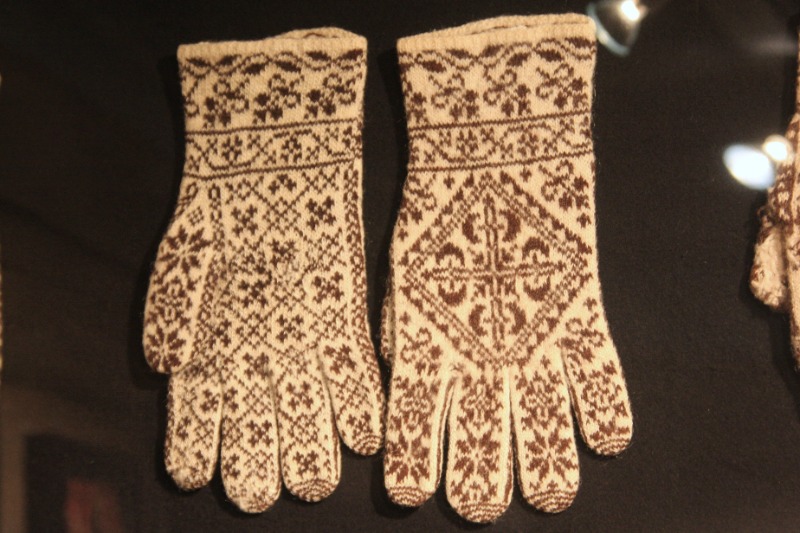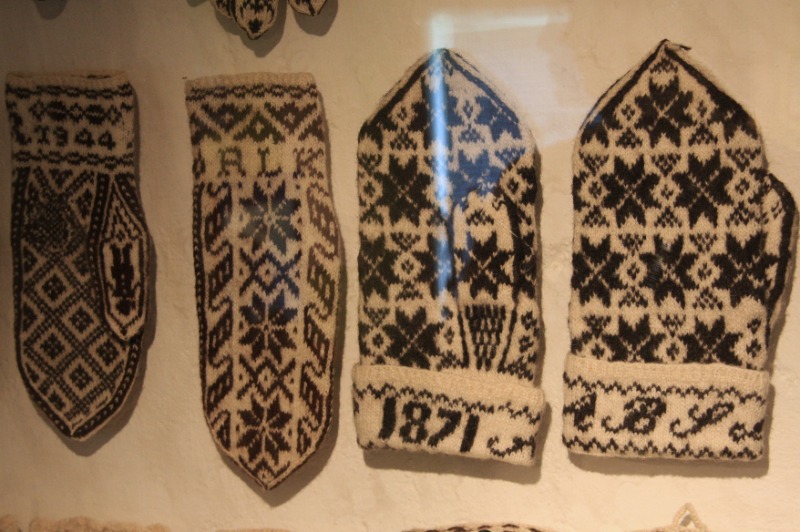
Hello, and welcome to the 5th instalment in the VERY irregular series Places to Sit and Knit (the last instalment was published nearly three years ago, crikey!). To get to today’s place, we first need to walk a short way along the path on top of Steenwijk’s old town ramparts. They date from the Eighty Years’ War (1568-1648).
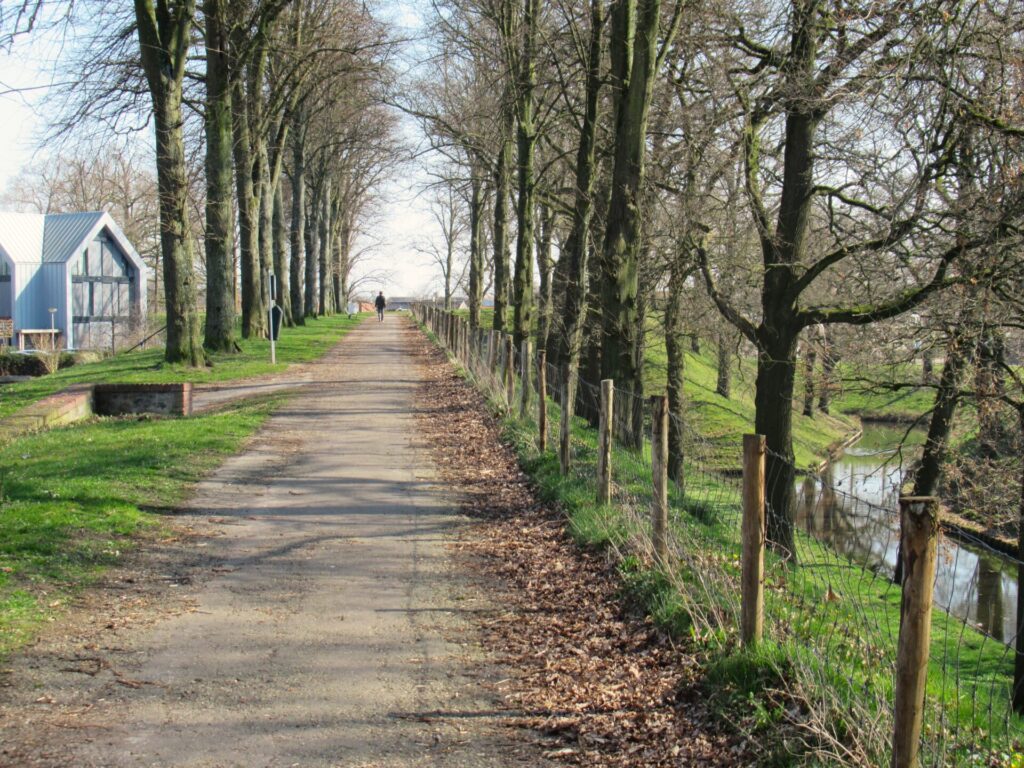
After last week’s post, my husband said, ‘Your readers must get a very strange picture of our country with all those old buildings and idyllic spots. No industrial estates, no modern apartment blocks, no motorways.’ This brought me up short. Am I being untruthful? It is not my intention to paint a false picture, but, well, take the photo below:
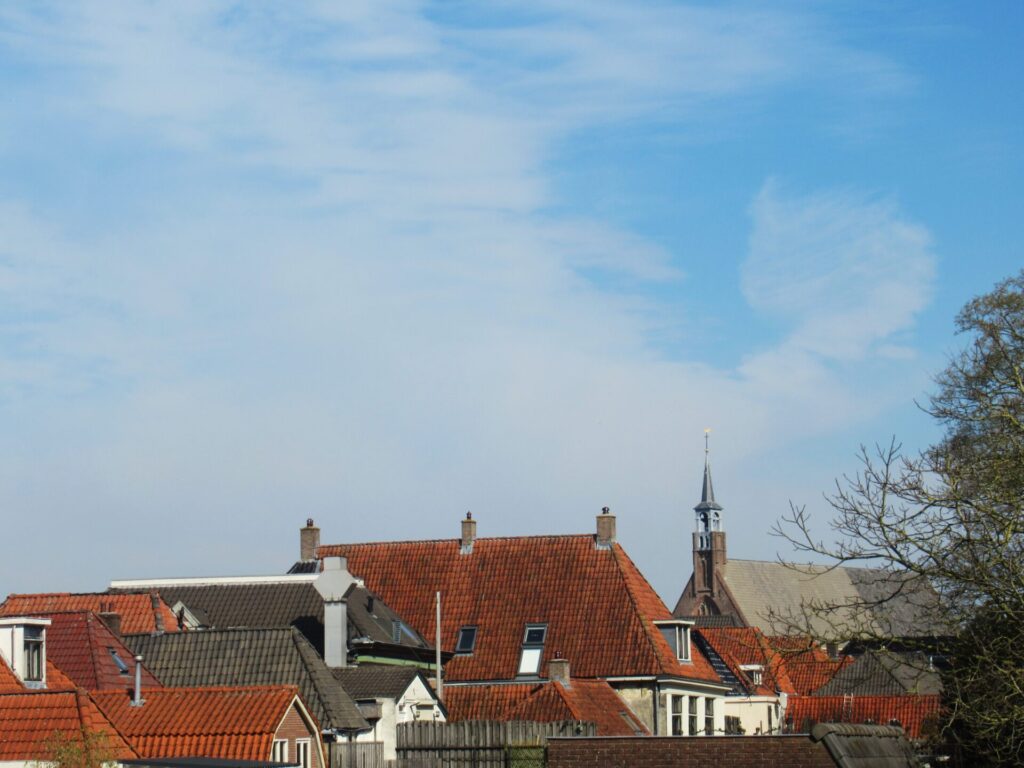
From the top of the ramparts, I could have pointed my camera downwards and photographed a parking space with cars, old garage doors and wheelie bins. Or upwards towards the rooftops and the sky. I happen to prefer the latter. I also enjoy taking you (and myself) to places that bring a sense of joy and/or peace. I hope you don’t mind my giving you an incomplete picture. Perhaps we can call it being selective?
A little further along the ramparts, I am pointing my camera downwards, for an overview of a small park called De Nettelbosch.

The red arrow points to the bench that is today’s Place to Sit and Knit. Sitting on the bench, this is our view – the Nettelbosch itself, a shopping street and the spire of the St Clemens Church:
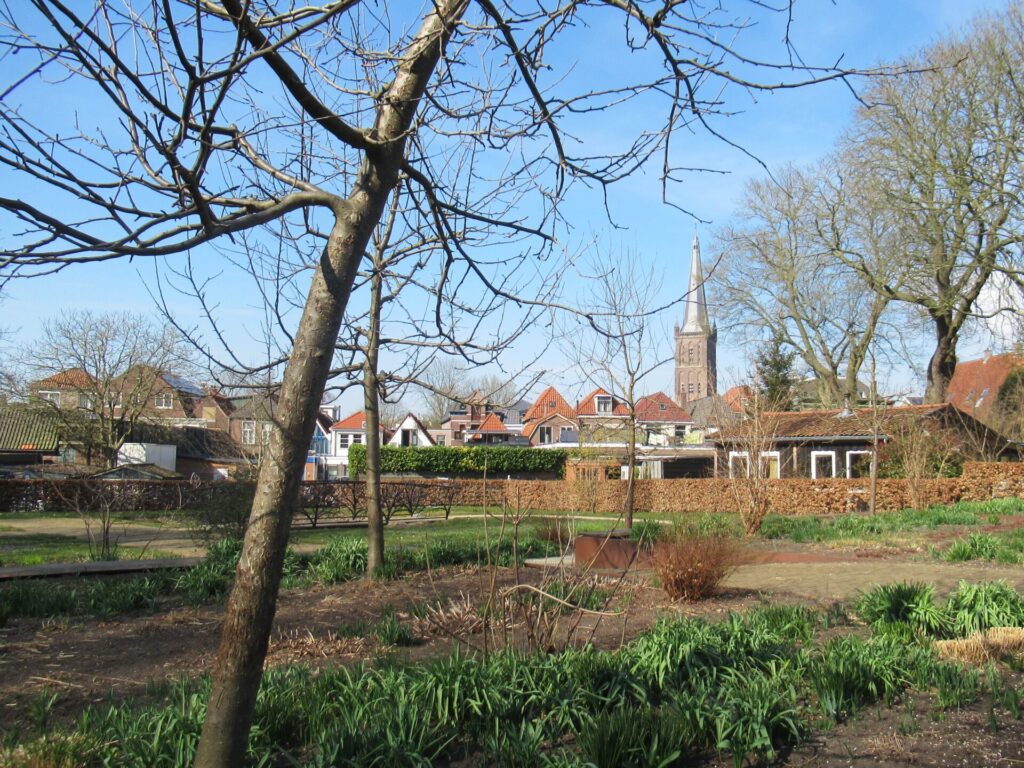
The knitting project I’ve brought is the first of a pair of Imker socks. Another pattern from that wonderful book 52 Weeks of Socks (for anyone not on Ravelry, an overview of the patterns in the book can be found here.) Socks with all-over cabling that will keep me on my toes.
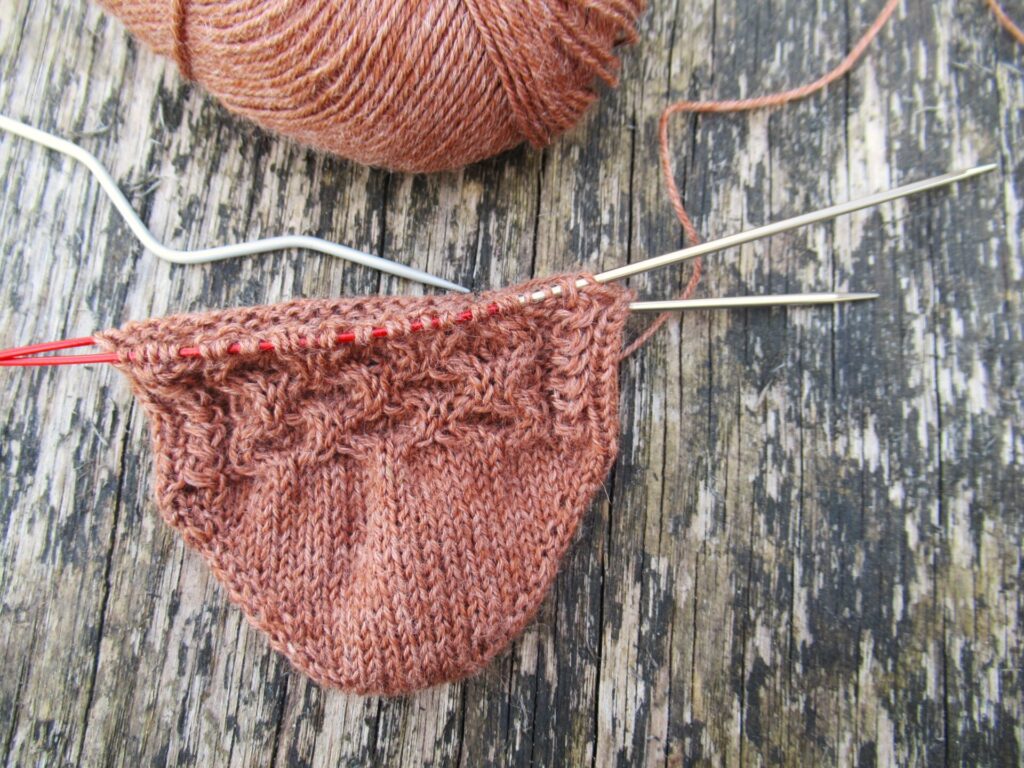
The yarn I’m using is Onion Nettle Sock (50 g/202 yds/185 m), made from 70% wool and 30% nettle fibre. This (and the fact that I had an errand here) is why I’ve chosen this spot to sit and knit – Nettelbosch means Nettle Patch, which is what it was before it was transformed into a public garden. Ah, it’s lovely to sit here, knit a few rounds and look around. There is a witch hazel with vibrant yellow flowers, fresh green shoots are appearing, and the rhododendron already has fat buds.

No need to feel embarrassed about knitting in public, because there is nobody else around. Do you feel comfortable knitting anywhere? I don’t, although I’ve only ever had positive comments.
There are so many things I’d like to knit and make, that I often find it difficult to choose. And then more project ideas come along on Ravelry and in newsletters to distract me. That’s why this time I’ve made a looooooong list of possible projects. Getting them out of my head and onto paper felt better straightaway. Then I chose several to focus on this spring and put all of the materials together in a box.
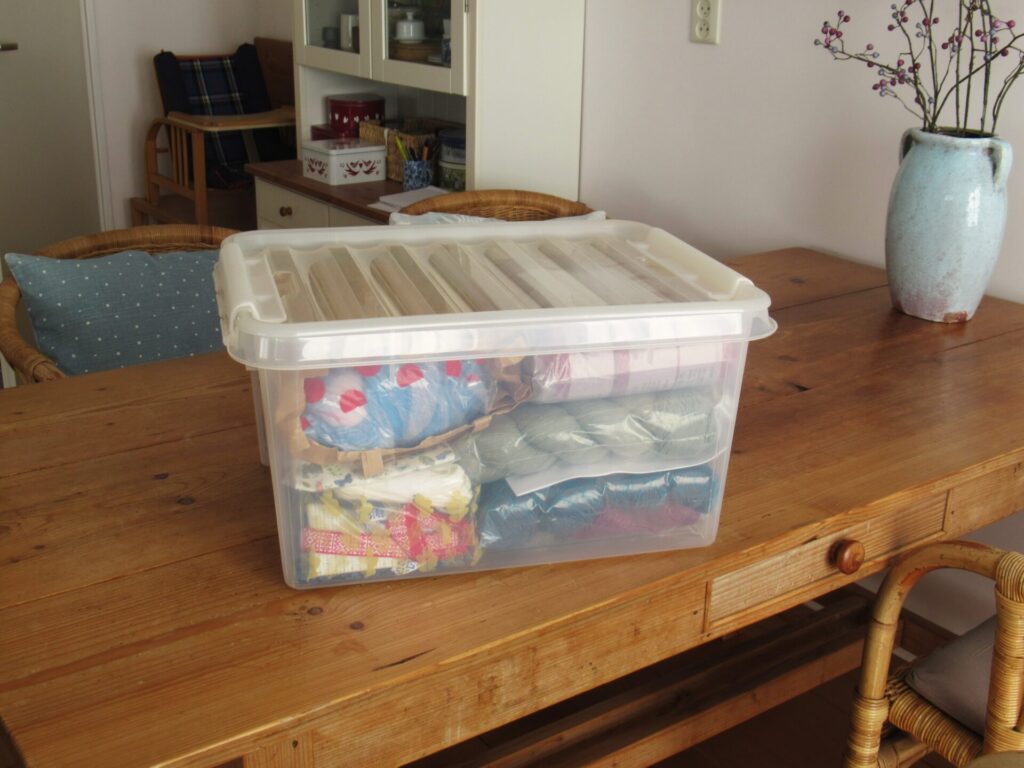
Yarn for two cardigans and several small projects, some spinning fibre and some fabric and ribbons. And then there are the socks and the wee Norwegian pullover on my needles. Far too ambitious? We’ll see…
Well, that’s me nattering on about my making. How about you? What do you have on your needles? Or do you crochet, embroider, quilt, spin, felt, paint, draw? How do you choose? Do you have multiple projects going on simultaneously or do you focus on one at a time? Any suggestions for great patterns to add to my long list? I’d love hearing from you in a comment, but if you don’t feel comfortable commenting that’s fine, too. You’re always welcome to just spend some time here. Well, it’s time to go. Hope to see you again soon!


